




NURTURE IN NATURE
Revitalize Your Mind, Body, and Soul

Eat, Pray, Heal

Discovering Filipino Cuisine’s Connection to Wellness


A Journey to the Natural Wonders of the Philippines Sustainable Resorts
Embracing Filipino Hospitality


















Revitalize Your Mind, Body, and Soul

Eat, Pray, Heal

Discovering Filipino Cuisine’s Connection to Wellness


A Journey to the Natural Wonders of the Philippines Sustainable Resorts
Embracing Filipino Hospitality












Escape the chaos. Breathe deep. Let nature nurture your soul.
In this hectic modern world of traffic jams, air pollution and infinite digital distractions, we are increasingly disconnected from the rhythms of the natural world around us. Yet deep within, we crave that primal connection to the earth’s boundless beauty and healing energy.
This issue is your gateway to rediscovering that awakening in the Philippines - a sanctuary for healing, wellness and embracing an enriched island lifestyle. An invitation to explore the astounding natural treasures that grace our spectacular Philippine archipelago.
Between these pages, you’ll find your next adventure escaping to distant unspoiled Philippine landscapes, where you can finally hear the whispers of the wind through the trees, feel the invigorating power of crashing waves, and lose yourself in panoramic vistas that will take your breath away.
You’ll also gain insights from enlightened Filipino guides who’ve found transcendence living in harmony with the natural world. Those who have unlocked the secrets to profound wellness and inner peace through harmonious practices honoring our roots in this island paradise.
Whether you’re an intrepid explorer or an urban seeker, this edition will inspire you to reset, recharge and realign your path by following nature’s way in the
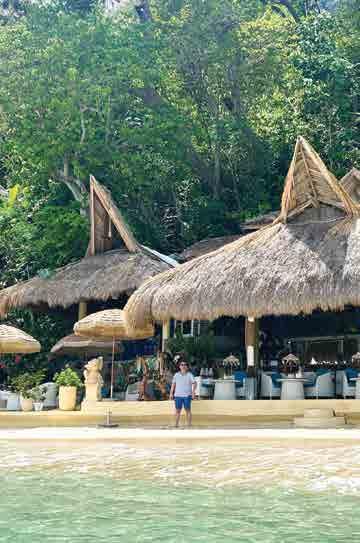
Philippines. It’s a renaissance embracing the universal truths and boundless wisdom that Mother Earth has been speaking for millennia.
We only need to listen with open hearts and minds. This is your call to come home to nature and rediscover the Philippines as a place of profound healing and enlightened living. A homecoming that awaits to elevate your journey of self-discovery, enlightenment and bliss.
I invite you to escape with us into this world of Philippine beauty, healing and wonder.
- Roger L. Oriel Publisher
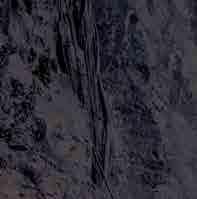








PUBLISHER & CEO
PRESIDENT & CO-PUBLISHER
EXECUTIVE CONSULTANT
EXECUTIVE EDITOR
EDITOR-IN-CHIEF
MANAGING EDITOR

CHIEF FINANCIAL OFFICER
VICE PRESIDENT FOR MARKETING & SPECIAL EVENTS
VICE PRESIDENT FOR ADVERTISING
VICE PRESIDENT FOR SALES
BUSINESS DEVELOPMENT
PHOTOGRAPHERS
GRAPHIC DESIGNERS

CONTRIBUTING WRITERS
ROGER LAGMAY ORIEL
CORA M. ORIEL
PAUL LIGONES
MOMAR G. VISAYA
BILLY DE LA CRUZ
CATHERINE C. ORIEL
GERALOU SAGUN
VINCE SAMSON
SHARON ANN BATHAN-SAN PEDRO
KIMBERLY DELOS SANTOS
ROCELLE AÑABEZA
GREG TRINIDAD
NOEL TY NOEL AMATA
LALAINE RICCI GEBANA
MARIA ALYSSA VENTURA
JERAMAE BELMONTE
PROSY DELA CRUZ
CONCON SINEL
ALFRED MALIT
SABRINA RAIN SAMSON
JESSAMINE ELISE SAGCAL
MINERVA BC NEWMAN
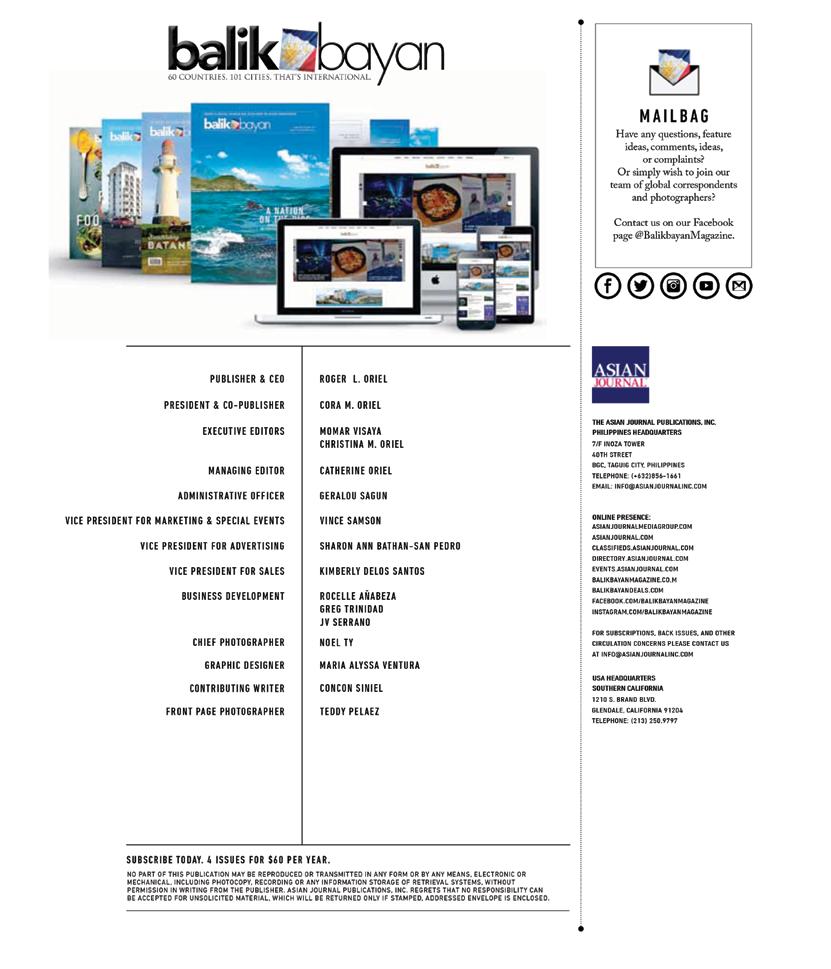
SUBSCRIBE
4





Have any questions, feature ideas, comments, ideas, or complaints?
Or simply wish to join our team of global correspondents and photographers?
Contact us on our Facebook page @BalikbayanMagazine






Glendale, California 91204 TELEPHONE: (213) 250.9797
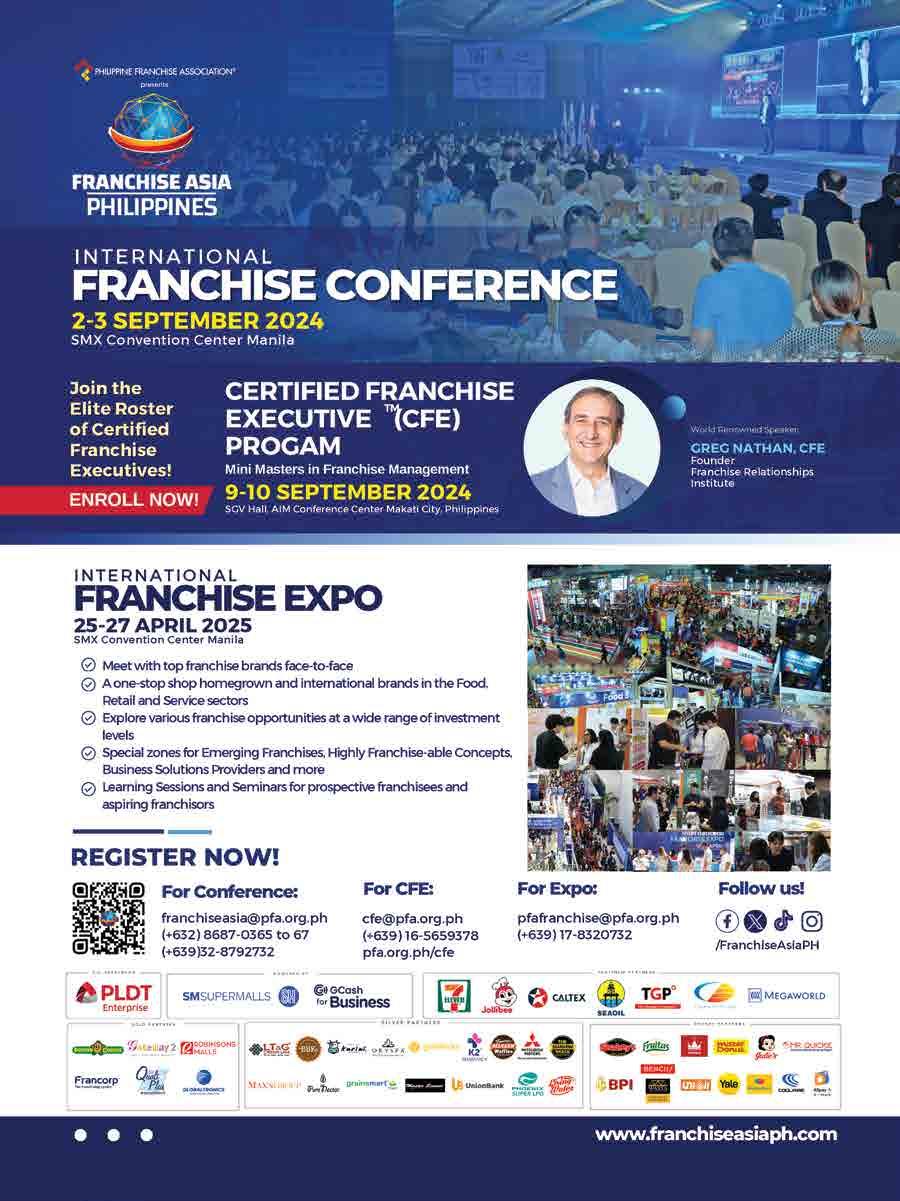
18 Puerto Princesa’s Hidden Gems
28 Island-Hopping Heaven: El Nido’s Aquatic Playground
42 Nature’s Masterpieces: A Trip to Philippines’ Natural Wonders
63 Retire in Paradise: Finding Your Forever Home
90 Pinoy Superfoods to Boost Your Health
98
Riding the Pacific’s Playground: Waves and Beach Raves Hidden Gems






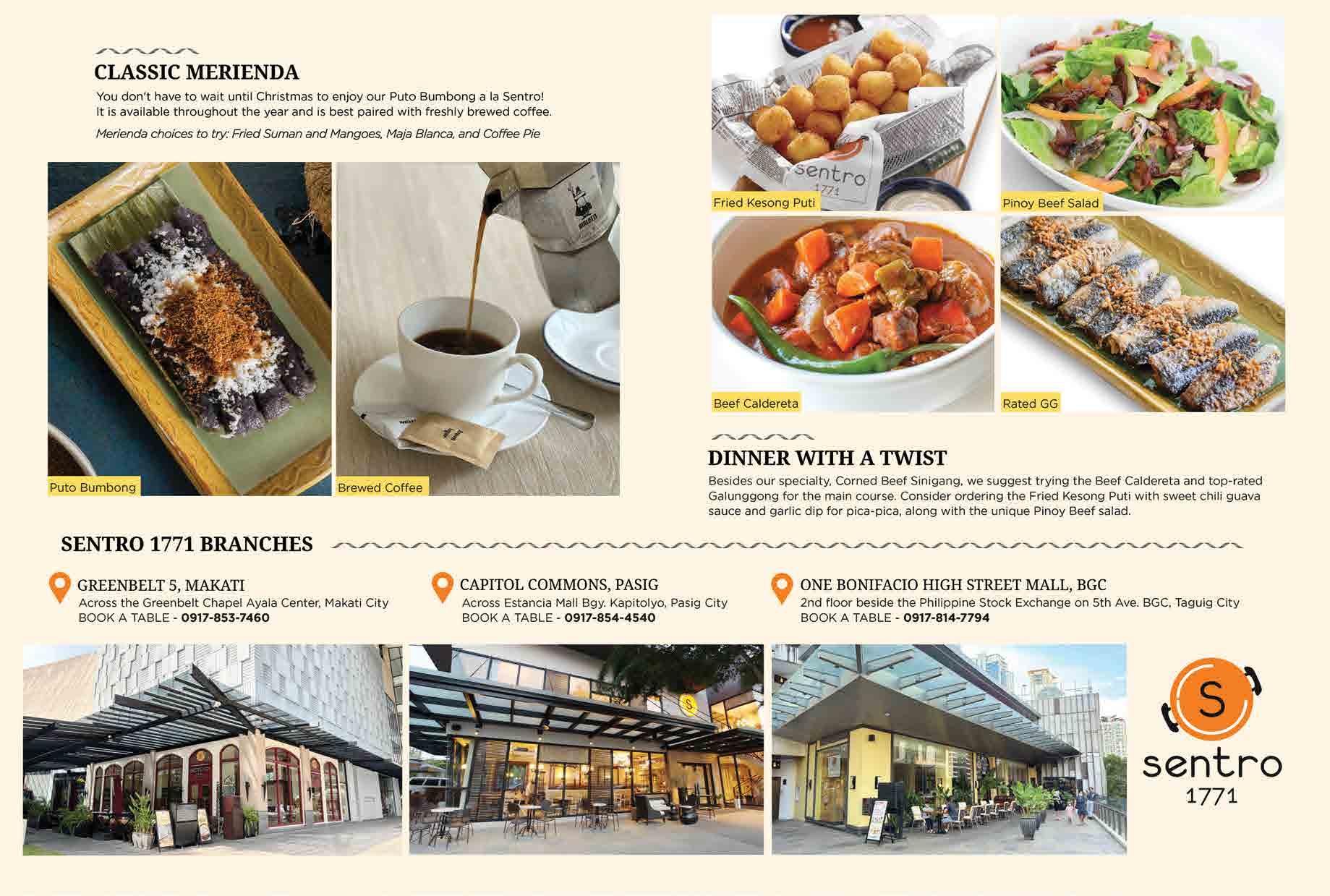

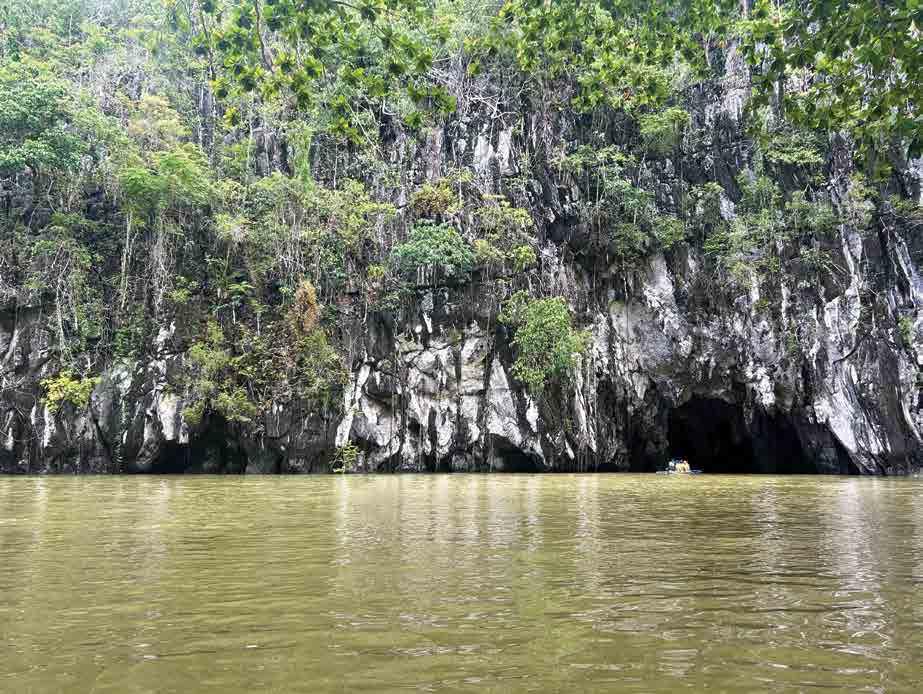
by Billy De La Cruz

As dawn breaks over the lush forests of Palawan, a small group of visitors boards electric-powered boats, their excitement palpable. They’re about to embark on a journey through one of nature’s most captivating wonders: the Puerto Princesa Underground River. This subterranean marvel, recognized as one of the New Seven Wonders of Nature, continues to evolve, offering new experiences while striving to preserve its delicate ecosystem.

The 8.2-kilometer river system winds its way through a labyrinth of limestone caverns, each turn revealing nature’s artistry. Stalactites and stalagmites, sculpted over millions of years, reach toward each other in an eternal dance of minerals and water. The cave’s recent lighting upgrades cast a soft glow on these formations, enhancing their otherworldly beauty without disturbing the cave’s inhabitants.
As boats glide silently through the cave’s chambers, visitors are treated to a gallery of nature’s sculptures.
The “Cathedral Chamber,” the largest cavern in the system, awed with its soaring ceiling and intricate rock formations. The “Candle Room” features a massive formation resembling a melting candle, its wax-like appearance a testament to the slow, patient work of water and minerals over millennia. Further along, the “Holy Family” greets visitors - a group of stalagmites that, with a bit of imagination, resemble Mary, Joseph, and baby Jesus. The “Pegasus” formation spreads its rocky wings near the ceiling, while the “Naked Lady” reclines in stony repose, sparking conversations and inspiring wonder at nature’s artistic prowess.
The river is home to a unique ecosystem. Bats hang in clusters from the ceiling, while swiftlets dart through the air, navigating by echolocation. In the crystal-clear waters below, endemic crabs scuttle across the riverbed, their presence a testament to the cave’s isolated environment.
The local government of Puerto Princesa, in collaboration with environmental agencies, has implemented a series of measures to protect this natural treasure. Their goal is to balance tourism with conservation. They’ve introduced an advanced booking system to manage visitor numbers and reduce environmental strain.
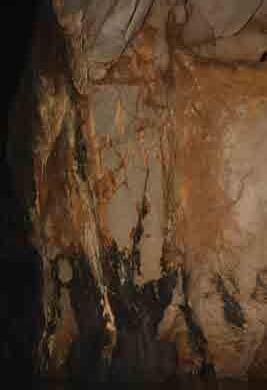



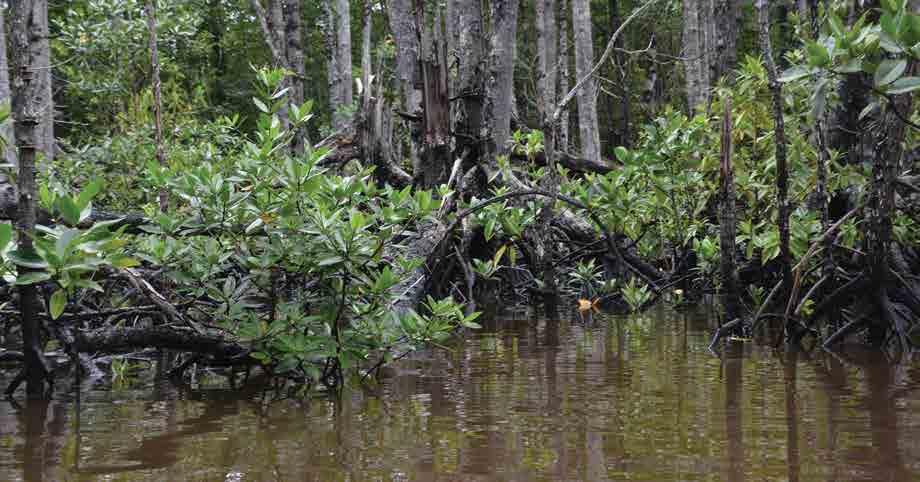
As visitors emerge from the underground river, blinking in the bright Palawan sun, their journey is far from over. The area surrounding the park offers a wealth of experiences that complement the subterranean adventure. Chief among these is the paddle boat tour through the Sabang Mangrove Forest, a vital ecosystem that serves as a natural barrier against coastal erosion and a nursery for marine life.
The Sabang Mangrove Forest, a sprawling 4,000-hectare haven of biodiversity, offers visitors an intimate glimpse into the intricate web of life that thrives in these brackish waters. As visitors glide silently through the narrow waterways in traditional paddle boats, they’re enveloped by a cathedral of green, the mangroves’ gnarled roots reaching down into the water like organic pillars.
The forest is a birdwatcher’s paradise. Keeneyed visitors might spot the vibrant plumage of the Palawan hornbill, hear the distinctive call of the Tabon scrubfowl, or catch a glimpse of the elusive Palawan peacock-pheasant. In the water, mudskippers dart across the surface, while fiddler crabs wave their oversized claws in territorial displays. Lucky paddlers might even spot a monitor lizard basking on a sun-warmed log or a troop of long-tailed macaques swinging through the canopy.
For the truly fortunate, there’s a chance to glimpse the rare Palawan Mangrove Snake, its sleek body perfectly adapted to life among the twisted roots and brackish waters. This endemic species, with its striking pattern of dark bands on a lighter background, is a testament to the unique biodiversity of Palawan’s coastal ecosystems.



The preservation of this vital ecosystem is a collaborative effort, with local indigenous tribes playing a crucial role. The Tagbanua and Batak peoples, who have called this region home for generations, now serve as guardians and guides of the mangrove forest. Their intimate knowledge of the ecosystem passed down through generations, informs conservation efforts and enriches the visitor experience.
These indigenous communities have implemented traditional sustainable fishing practices in designated areas of the mangrove forest, demonstrating how human needs can be met without compromising the ecosystem’s health. They also conduct regular patrols to prevent illegal logging and poaching, working in tandem with local authorities to ensure the forest’s protection.
Moreover, the tribes have established community-based ecotourism initiatives, training members as guides for the mangrove tours. This not only provides a sustainable source of income for the community but also ensures that visitors receive authentic, knowledgeable interpretations of the ecosystem and its cultural significance.
For the more adventurous, a zipline ride provides a bird’s-eye view of the lush canopy below, offering a thrilling perspective on the vast expanse of green that blankets the region.
Trekking enthusiasts can explore the Jungle Trail, a challenging 5-kilometer hike that winds through dense tropical forests. Along the way, experienced guides share insights about the forest’s ecology and the traditional medicinal uses of various plants.
As the day winds down, the magic continues with fireflywatching tours along the Iwahig River. Here, thousands of fireflies create a living light show, their bioluminescent display a fitting end to a day filled with natural wonders. The silent electric boats used for these tours ensure minimal disturbance to the fireflies and other nocturnal creatures.
As the sun sets over Palawan, casting a golden glow across the lush landscape, visitors to the Puerto Princesa Underground River and its surrounding wonders are left with a profound appreciation for the natural wealth of the Philippines. This archipelagic nation, blessed with over 7,000 islands, is a treasure trove of biodiversity, boasting some of the world’s most diverse ecosystems both above and below the water.
The Underground River is just one jewel in the Philippines’ crown of natural wonders. From the vibrant coral reefs of Tubbataha to the chocolate hills of Bohol, from the rice terraces of Ifugao to the pristine beaches of Boracay, the country is a living testament to the incredible diversity and resilience of nature.
Yet, these natural riches face unprecedented challenges in the 21st century. Climate change, deforestation, and unsustainable development threaten to undermine the delicate balance that has sustained these ecosystems for millennia. The story of Puerto Princesa, however, offers a glimmer of hope. It demonstrates how careful management,
community involvement, and sustainable tourism can help preserve these natural wonders for future generations.
The influx of tourists, while economically beneficial, also presents challenges. Increased foot traffic can lead to erosion and disturbance of wildlife habitats. The demand for accommodation and amenities puts pressure on local resources and can lead to uncontrolled development if not carefully managed.
However, the story of Puerto Princesa offers a glimmer of hope. It demonstrates how careful management, community involvement, and sustainable tourism can help preserve these natural wonders for future generations. The local government has implemented strict regulations on development, limiting the number of visitors to the underground river and mandating eco-friendly practices for all tourism operations.
Innovative solutions are being explored to address these challenges. A coral restoration project has been initiated in nearby marine protected areas, aiming to bolster the resilience of coastal ecosystems. Local schools have integrated environmental education into their curricula, fostering a new generation of conservation-minded citizens.
Research partnerships with universities are helping to monitor the health of the underground river ecosystem, tracking changes and informing adaptive management strategies. Meanwhile, community-based reforestation projects are working to expand and connect fragmented forest areas, providing expanded habitats for wildlife and increasing carbon sequestration.
These efforts, while focused on Puerto Princesa, serve as a model for other ecologically sensitive areas in the Philippines and beyond. They demonstrate that with vision, commitment, and collaboration, it is possible to balance conservation with sustainable development, preserving natural wonders while also supporting local communities.
As visitors depart, they carry with them not just memories of breathtaking landscapes and unique wildlife, but also a renewed sense of responsibility. They’ve witnessed firsthand the importance of protecting these irreplaceable natural resources, not just for their beauty or tourism potential, but for their crucial role in maintaining the planet’s ecological balance.
The Philippines, with its wealth of natural wonders, stands at a crossroads. The choices made today will determine whether future generations will inherit a land of depleted resources or a vibrant, thriving ecosystem. The success of conservation efforts in places like Puerto Princesa shows that with dedication, innovation, and respect for both nature and local communities, it’s possible to chart a course toward a sustainable future.
As night falls and the fireflies begin their ethereal dance along the Iwahig River, there’s a palpable sense of hope in the air. It’s a reminder that in the face of global environmental challenges, every protected forest, every preserved species, and every restored ecosystem is a victory. And here, in this corner of Palawan, amidst the limestone cliffs and mangrove forests, that victory feels tangible, offering inspiration for conservation efforts not just in the Philippines, but around the world.



by Billy De La Cruz
Perched in the heart of a nature reserve near the Puerto Princesa Subterranean River National Park, Four Points by Sheraton Palawan Puerto Princesa stands as a testament to luxury, sustainability, and the breathtaking beauty of Palawan.
This world-class resort, sprawling across 5.25 hectares of pristine beachfront property, seamlessly blends exceptional hospitality with the raw beauty of nature, offering an unparalleled escape for travelers seeking both adventure and relaxation in one of the Philippines’ most stunning destinations.


As you step into their compound, you’re immediately enveloped by the essence of the island. The resort’s design is a love letter to Palawan’s natural splendor, seamlessly blending modern luxury with local artistry.
Dietmar Platz, General Manager of Four Points by Sheraton Palawan, Puerto Princesa, proudly showcases this fusion.
“Our lobby is a gallery of Palawan’s soul. From paintings of Sabang’s iconic jeepneys to artifacts representing the Underground River, every detail tells a story of this remarkable place,” Platz tells Balikbayan Magazine
This celebration of local culture extends beyond mere aesthetics. Floor-to-ceiling windows frame postcardperfect views of rugged mountains and the shimmering ocean, while the resort’s privileged location offers guests direct access to one of Puerto Princesa’s rare swimmable beaches. Here, the line between indoor comfort and outdoor adventure blurs, inviting guests to experience Palawan in all its untamed beauty.
Whether you’re lounging by the pool, enjoying a meal with an ocean view, or stepping onto the warm sand, the resort ensures that the natural wonders of Palawan are always within reach, making every moment a testament to the island’s captivating allure.
The resort boasts 168 well-appointed rooms, each designed to provide a private haven after a day of island adventures. These sanctuaries seamlessly blend comfort with the beauty of their surroundings, offering guests a choice between verdant garden vistas and sweeping ocean panoramas.
The rooms are more than just a place to rest; they’re an extension of Palawan’s natural splendor. Floor-to-ceiling windows flood the spaces with natural light, while private balconies invite guests to breathe in the tropical air and soak in the mesmerizing landscapes.
From solo travelers seeking tranquility to families creating lasting memories, every guest finds their perfect retreat at Four Points by Sheraton Palawan Puerto Princesa. Here, luxury and nature coexist, promising restful nights and inspiring mornings in the heart of paradise.
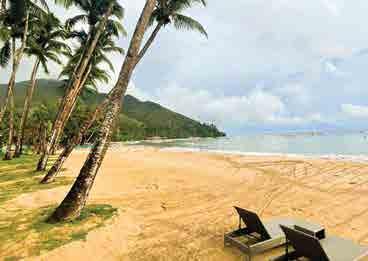




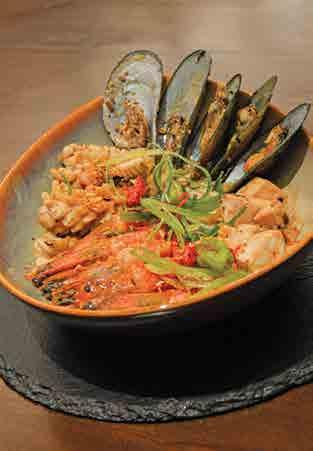

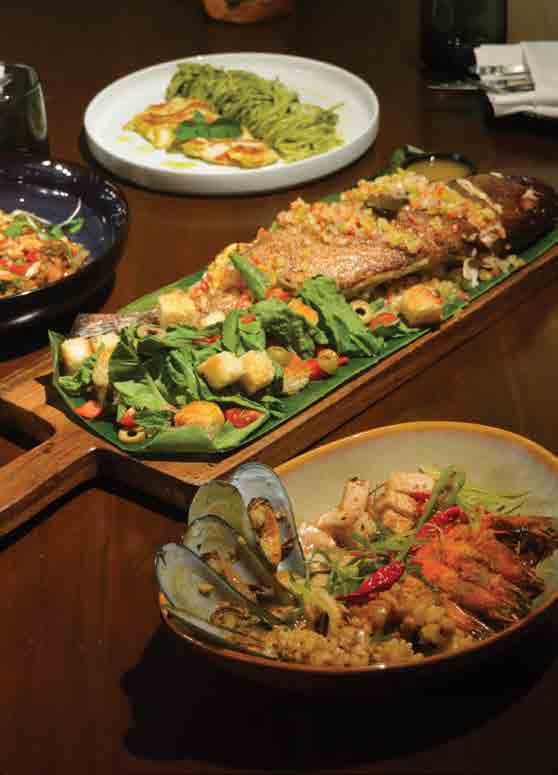

Prepare your taste buds for an extraordinary adventure at Four Points by Sheraton Palawan, Puerto Princesa. Here, culinary artistry meets sustainability, creating a dining experience that’s as responsible as it is delectable.
“Our kitchen is a celebration of Palawan’s bounty,” Food and Beverage Manager Mark Anthony Antonio enthuses. “We’ve cultivated relationships with local organic farmers, ensuring every ingredient tells a story of the island’s rich soil and crystal-clear waters. From cage-free eggs to line-caught seafood, our commitment to sustainability infuses every bite with purpose and flavor.”
For those yearning for a taste of la dolce vita, Il Fiore is set to open soon. This chic Italian-inspired eatery will be where tradition meets innovation. The star of the show? A gleaming wood-fired brick oven, visible from the open kitchen, will turn out pizzas so authentic you’ll swear you’re in Naples. Once open, guests will not just be tasting food -- they’ll be experiencing the passion and creativity of culinary artisans at work.
At Four Points by Sheraton Palawan, every meal is more than sustenance – it’s a journey through the flavors, aromas, and culinary heritage of this island paradise. Each dish serves as a delicious reminder of the resort’s commitment to celebrating local culture while satisfying global palates.


Picture yourself lounging by a shimmering pool under a canopy of stars, the gentle evening breeze caressing your skin, as you reach for a drink that embodies the very soul of Palawan nights. This enchanting scene comes to life at the Four Points by Sheraton Palawan’s Pool Bar, an illuminated aquatic haven that transforms into a magical realm after sunset.
“Each of our signature cocktails tells a unique story of paradise after dark,” Antonio shares. “Take our Beach Morning Glory, for instance. It’s not just a drink; it’s a sensory journey that captures the mystical hues of our moonlit beachfront flora in a glass. And the Sabang Mist? It’s our love letter to Palawan’s nocturnal charm, infusing the local Lambanog spirit with flavors that dance on your palate like the gentle night breeze.”
But the artistry doesn’t stop at cocktails. Beer aficionados are in for a treat with the resort’s Best Brews program. In a groundbreaking collaboration with Palaweño Brewery, the Philippines’ first female-led craft brewery, Four Points by Sheraton Palawan offers a hopfueled adventure through the island’s evening flavors.
“Our Pineapple by the Sea IPA is a revelation under the stars,” Antonio boasts. “Crafted with pineapples from Bataraza, Palawan’s pineapple capital, it’s a sip of tropical moonlight. And don’t miss our Ayahay Beer IPA and Hunter Honey Nut Brown Ale – they’ve earned spots in the American Express Essentials’ Ultimate Guide to the World’s Best Craft Beers!”
From cocktail connoisseurs to craft beer enthusiasts, every guest will find their perfect nightcap at the Pool Bar. This illuminated sanctuary promises more than
Whether you’re craving international comfort or eager to dive into Filipino specialties, the talented chefs craft each dish to surprise and delight. Here, dining isn’t just about sustenance— it’s about experiencing Palawan’s rich culinary tapestry in every bite.

The bar menu reads like a love letter to the island. Signature cocktails showcase local fruits and herbs, from tangy martinis to smooth rum concoctions. For beer enthusiasts, a curated selection of Philippine craft brews offers a taste of the country’s burgeoning microbrew scene. Whether you’re sipping a tropical creation by the pool or enjoying a cold local lager with sunset views, each drink tells a story of Palawan’s flavors and laid-back island culture.
just drinks – it offers liquid memories, each taste a tribute to the beauty, flavors, and spirit of this island paradise after dark. As you raise your glass, surrounded by the twinkling lights reflected in the pool, you’re not just enjoying a beverage; you’re celebrating the mesmerizing essence of Palawan nights, expertly captured and served with a generous splash of island magic.

Nestled within the lush grounds of the resort lies a haven of tranquility - the resort’s world-class spa. Here, the art of relaxation is elevated to new heights, blending traditional Filipino healing practices with modern luxury.
As you step into this sanctuary, the hustle of the outside world melts away. The air is fragrant with the scent of local herbs and flowers, setting the stage for a journey of rejuvenation.
Couples can retreat to private spa suites, where side-byside treatments foster connection and shared bliss.
After treatment, linger in the spa’s Wellness Lounge. Sip on herbal teas crafted from local ingredients as you gaze out over the resort’s verdant gardens, feeling renewed and at one with the natural beauty that surrounds you.
Complementing the spa’s relaxation offerings is the resort’s cutting-edge 24-hour gym. Whether you’re an early bird looking to greet the sunrise with a workout, or a night owl preferring late-night exercise session, the fullyequipped fitness center is always ready to accommodate your schedule.
From cardio machines to free weights, the gym caters to all fitness levels and preferences. Personal training sessions are available upon request, allowing guests to maintain or kickstart their fitness routines even while on vacation.


Families will find plenty to keep everyone entertained at Four Points by Sheraton Palawan, Puerto Princesa. The Cub’s Club is a particular highlight, featuring both indoor and outdoor play areas designed specifically for young children.
“The Cub’s Club is the highlight of the resort’s familyfriendly features with its indoor space and outdoor playground designed specifically for young children,” Platz explains.
The expansive pool area also includes a kiddie pool, ensuring that even the youngest guests can enjoy a splash in the tropical sun.

While the resort is a destination in itself, the wonders that await just beyond its grounds are nothing short of magical. The resort serves as your luxurious basecamp for exploring the natural marvels of Palawan, each more breathtaking than the last.
Imagine gliding through the otherworldly Puerto Princesa Subterranean River, a UNESCO World Heritage Site mere moments from the resort. This underground wonderland, with its echoing chambers and mysterious rock formations, promises an adventure straight out of a fantasy novel.
But that’s just the beginning. Platz, with evident excitement, shares an exciting list of nearby attractions.
“Other nearby attractions are the Mangrove Paddle Boat, where you can experience ‘tamilok’ in the mangrove, Isla Rita, Hundred Caves, Sabang Waterfalls, Ugong Rock for spelunking and zipline adventures, and the Sabang Zipline.”
What sets Four Points by Sheraton Palawan, Puerto Princesa apart is its unwavering commitment to sustainability and environmental stewardship. The resort has implemented numerous initiatives to minimize its ecological footprint and support the local community.
“We partner with Sabang Renewable Energy Corporation (SREC), a private utility provider that harnesses solar power as the primary electricity source. This partnership powers the resort through 300KW of in-house solar panels, fueling various utilities like pumps and lighting, all while prioritizing energy conservation with 100% LED lighting,” Platz proudly details.
The resort’s zero-plastic policy, rainwater collection system, and collaboration with local organic farms further underscore its dedication to eco-friendly practices. Guests can feel good knowing that their stay contributes to the preservation of Palawan’s unspoiled environment.
Four Points by Sheraton Palawan, Puerto Princesa doesn’t just cater to tourists; it actively engages with and supports the local community.
“We provide employment opportunities for local residents, boosting the local economy. We also support local businesses and collaborate with local schools and
universities for training programs and internships to help develop the skills of their students,” Platz elaborates.
The resort’s involvement in local conservation efforts, such as mangrove planting, beach clean-ups, and wildlife conservation, demonstrates its commitment to being a responsible member of the Palawan community.
As Puerto Princesa continues to grow as a tourism destinationFour the resport is poised to evolve with it.
“We are anticipating the opening of our Ballroom and Palawan Beach Club in Q4 this year. The ballroom will be a pillarless space that can accommodate up to 300 people, ideal for various events, conferences, and weddings,” Amie Villena, Director of Sales and Marketing, shares.
The resort also has two meeting rooms, each ready to accommodate 10-15 persons. These spaces are perfect for smaller gatherings or breakout sessions, complementing the larger event capabilities of the resort.
The upcoming Palawan Beach Club promises to be another highlight, featuring an indoor game area, sports bar, and casual hangout space with an al fresco area facing the beach.
At Four Points by Sheraton Palawan, Puerto Princesa, your tropical dreams take flight. It’s an invitation to explore the unexplored, to taste the extraordinary, and to find yourself amid the raw beauty of one of the world’s last paradises.
“From the relaxing beachfront and the refreshing swimming pool to the rejuvenating spa and the scenic ocean and mountain views, each spot provides a special way to unwind and enjoy the beauty of Sabang, Puerto Princesa,” Platz succinctly puts it.
But perhaps the true magic of this place lies not in what it offers, but in what it asks of you. To slow down. To breathe deeply. To reconnect with a part of yourself long forgotten in the rush of everyday life.
Here, amidst the gentle lapping of waves and the rustle of palm fronds, you’re invited to shed the weight of expectations and simply be. To wake with the sun, to feast on flavors that dance on your tongue, to lose yourself in the wonder of a world untamed.
So come, let Palawan’s magic weave its spell. Your adventure awaits at Four Points by Sheraton Palawan, Puerto Princesa, and it promises to be extraordinary.


by Joyce Balansag
In the sun-drenched hills of Puerto Princesa, Palawan, where an underground river whispers secrets beneath your feet, Sheridan Organic Farm and Eco Village stands as a beacon of sustainable luxury. This 50-hectare paradise isn’t just a retreat—it’s a revolution in eco-tourism.
Here, among swaying palms and fragrant fields, visitors are invited to dive into a world where nature’s abundance meets conscious hospitality, promising an escape that feeds the senses and rejuvenates the spirit.
As you arrive at the eco-village, you’re immediately enveloped by the lush greenery and tranquil atmosphere. The air is filled with the gentle rustling of leaves and the melodic chirping of native birds. It’s a stark contrast to the hustle and bustle of city life, offering a much-needed respite for weary travelers.
The farm’s commitment to sustainability is evident in every aspect of its operation, from the wooden plates and utensils used in the dining area to the organic farming practices employed throughout the property.
One of the highlights of a visit to Sheridan Organic Farm and Eco Village is the opportunity to savor truly fresh, organic cuisine. The farm’s kitchen serves up a delightful array of dishes, all made with ingredients harvested just hours before your meal. Imagine biting into a crisp salad of farm-fresh vegetables, followed by a hearty bowl of “laswa,” a traditional vegetable soup bursting with flavor. The “gising-gising,” a local favorite


made with swamp cabbage stems simmered in coconut milk, offers a delightful kick of spice.
But perhaps the most memorable part of any meal at Sheridan Organic Farm and Eco Village is their signature tarragon tea. Served warm or cold, this aromatic beverage is the perfect complement to their homemade kamote (sweet potato) cake. Both the tea and the organic black rice served with meals are cultivated right on the farm, offering guests a true taste of Palawan’s fertile soil.
What sets Sheridan Organic Farm and Eco Village apart is not just its commitment to organic farming, but its dedication to community involvement. The farm employs locals from Palawan, providing valuable job opportunities and training in sustainable agricultural

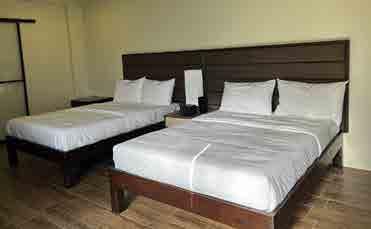

practices. This approach not only benefits the local economy but also ensures that traditional farming knowledge is preserved and passed on to future generations.
For those seeking a more immersive experience, Sheridan Organic Farm and Eco Village offers a variety of activities that allow guests to get their hands dirty –quite literally. You can try your hand at plowing a rice field, harvesting vegetables, or even taking a ride on an animal-drawn sled. These activities provide not just entertainment, but a deeper appreciation for the hard work that goes into organic farming.
The eco-village’s commitment to preserving the local ecosystem extends beyond its borders. Each year, they organize tree-planting activities with guests, allowing visitors to leave a lasting, positive impact on Palawan’s lush landscapes. It’s a touching gesture that symbolizes the symbiotic relationship between humans and nature that the strives to nurture.
As the day winds down, guests can retreat to one of the six thoughtfully designed rooms. When night falls, Sheridan Organic Farm and Eco Village offers a range of accommodation options to suit every traveler’s needs. From cozy bunk beds in the mixed dormitory, perfect for solo adventurers and budget-conscious backpackers, to the spacious Family Villa ideal for those seeking a private sanctuary, each room is a testament to ecofriendly design.
Natural materials blend seamlessly with modern comforts, creating spaces that are as kind to the environment as they are to their occupants. Whether you’re stargazing from your private balcony or drifting off to the gentle hum of the forest, Sheridan ensures that your connection with nature doesn’t end at sunset.
Each space is a perfect blend of comfort and ecoconsciousness, featuring energy-efficient lighting and water-saving fixtures. The use of natural materials in the decor further emphasizes the resort’s commitment to sustainability.
A stay at Sheridan Organic Farm and Eco Village is more than just a vacation – it’s an opportunity to rediscover nature’s rhythm. Here, the pace of life slows down, allowing you to savor each moment, each bite, and each breath of fresh air. It’s a chance to reflect on our relationship with the environment and to experience firsthand the beauty and bounty of sustainable living.
In a world where we’re increasingly disconnected from our food sources and natural surroundings, Sheridan offers a refreshing alternative. It reminds us of the simple joys of eating food you’ve helped grow, of the satisfaction that comes from working with the land, and of the peace that can be found in nature’s embrace.
As you leave the farm, you’ll take with you more than just memories. You’ll carry a renewed appreciation for the earth’s gifts, a deeper understanding of sustainable practices, and perhaps, a commitment to making more eco-conscious choices in your daily life. In this way, Sheridan Organic Farm and Eco Village doesn’t just offer a getaway – it offers a transformative experience that stays with you long after you’ve returned home.
by Rocelle Añabeza
Welcome to Puerto Princesa, the bustling capital of Palawan, where city life meets tropical paradise. This vibrant destination offers a perfect blend of natural wonders, cultural experiences, and modern comforts. At the center of it all is the Sheridan Boutique Hotel, an ideal base for exploring the city’s many attractions.
Conveniently located just 5 minutes away from Puerto Princesa International Airport, Sheridan Boutique Hotel caters to both business and leisure travelers with its range of accommodations including Deluxe, Standard, and Superior rooms.
Start your day bright and early at The Cafe Lounge, the hotel’s in-house dining establishment. Open daily from breakfast to dinner, it’s more than just a place to eat –it’s a vibrant hub for both guests and locals alike. Take a bite of their signature breakfast spread, or opt for a light meal paired with a cup of their premium, locally-sourced coffee. The casual yet elegant atmosphere makes it an ideal spot for everything from quick bites to leisurely meals, all accompanied by attentive and friendly service. After breakfast, set out to explore the city’s attractions. Visit the Palawan Heritage Center to delve into the island’s rich history and culture, then take a refreshing stroll along the Puerto Princesa Baywalk Park, enjoying the scenic bay views.

Resto Bar. This local favorite is renowned for its fresh seafood and authentic Filipino cuisine. The restaurant’s specialties include grilled catch of the day, sinigang (a sour tamarind-based soup), and kinilaw (a Filipinostyle ceviche). The vibrant atmosphere is enhanced by its rustic decor, featuring elements that pay homage to Palawan’s fishing heritage. Don’t miss their signature cocktails, many of which incorporate local fruits and spirits for a true taste of the island.





Spend your afternoon exploring more of the city, including the historic Plaza Cuartel and the beautiful Immaculate Conception Cathedral.
As evening approaches, return to Sheridan Boutique Hotel for some well-deserved relaxation at Anaya Spa. This tranquil oasis offers a range of treatments designed to rejuvenate both body and mind. Their massage therapies are tailored for men, women, and couples, utilizing traditional Filipino techniques alongside modern spa practices. Popular treatments include the Hilot (a traditional Filipino massage), aromatherapy massages, and body scrubs using local ingredients like coconut and aloe vera. The spa’s serene ambiance, complete with soft lighting and soothing music, provides the perfect environment to unwind after a day of exploration.
Cap off your evening with dinner back at The Cafe Lounge. As night falls, the cafe transforms into a cozy lounge and bar, offering a selection of cocktails, wines, and local beers. Enjoy a leisurely dinner from their evening menu, which might include dishes like grilled seafood platters or Filipino-inspired tapas. The subdued lighting and ambient music create a perfect backdrop for reflecting on your day’s adventures or planning tomorrow’s excursions.
Whether you’re in Puerto Princesa for business or leisure, Sheridan Boutique Hotel, with its comfortable rooms, delightful dining options at The Cafe Lounge, rejuvenating treatments at Anaya Spa, and proximity to local attractions like Anaya Seafood Grill and Resto Bar, offers a comfortable and convenient home base for exploring all that this captivating city has to offer.

by Billy De La Cruz

At the crossroads of luxury and authenticity, where the beauty of Palawan meets innovative design, Weekends Resort El Nido emerges as a tropical sanctuary like no other. This isn’t just a place to stay; it’s a destination that stirs the soul. With its distinctive dome-shaped villas inspired by traditional Filipino sunhats, Weekends Resort El Nido offers a unique blend of cultural immersion and modern indulgence.
From its prime beachfront location to its commitment to sustainable tourism, every aspect of the resort is crafted to provide guests with an experience that’s as enriching as it is luxurious. Prepare to embark on a journey that will redefine your understanding of paradise.

“El Nido is really something special. It’s got the best of what you’d want on a tropical island, but it’s not just about partying. There’s so much culture here, from the people to the land itself,” renowned businessman and real estate developer Noel “Toti” Cariño, the mastermind behind Weekends Resort El Nido, speaks with unbridled enthusiasm.
His words encapsulate the essence of what makes El Nido, and by extension Weekends Resort El Nido, so special — a perfect blend of natural beauty, rich cultural heritage, and luxurious comfort.
One of Weekends Resort El Nido’s strongest selling points is its strategic location, allowing guests to easily immerse themselves in the local culture or retreat to their own slice of paradise as they please.
“The location is just perfect. Right on the beach, right on the water, less than 3 kilometers from the town center, and right on the highway.
Transportation is a breeze,” Mr. Cariño proudly points out.
The commitment to excellence at Weekends Resort El Nido is truly a family affair. Mr. Cariño’s daughter, Marija Ivanka Carino, known to many as Micki, plays a crucial role in maintaining the high standards of the resort.
Her hands-on approach to every aspect of the resort’s operations ensures that guests consistently experience the luxury and attention to detail that Weekends Resort El Nido is known for. From overseeing guest services to fine-tuning the culinary offerings, her dedication complements her father’s vision, creating a seamless and exceptional experience for all who visit.
The resort’s unique architectural design sets it apart from typical tropical getaways. The distinctive domes, reminiscent of native Filipino sunhats, seamlessly blend cultural heritage with modern amenities.
“The dome is one of the oldest structures in the world, which is still being used today. We wanted to use a design that would be timeless. We used our own colors, which we believe represented El Nido’s overall feel, “ Micki shares. “The domes are color teal because that’s the color of the water of the sea in El Nido,” she further elaborates.
This innovative approach not only creates a visually stunning environment but also ensures sustainability and durability, allowing the resort to withstand the test of time and nature.
Complementing the distinctive compound is the resort’s stunning infinity pool. This architectural gem is strategically positioned to offer unobstructed views of the pristine and picturesque beach. The pool’s seamless edge appears to merge with the horizon, creating an illusion of endlessness that mirrors the vast ocean beyond.





Luxury Dome Villas: These flagship rooms showcase the unique salakot-inspired domes, offering a romantic and culturally rich experience for couples.
Courtyard Villas: Facing an open expanse, these rooms are perfect for couples seeking comfort and ambiance.
Family Suites: Versatile spaces that accommodate individuals, groups of friends, and families, ensuring comfort for all.
Club Suites: Affordable rooms ideal for gatherings, accommodating up to four people with two double decks.
“The various types of accommodation ensure that all types of travelers are catered to. The Family Suites and Club Suites are for sharing, and while they can accommodate families and groups of friends, they are also recommended for solo travelers who are willing to share a room with other solo travelers. The Courtyard Villas and Dome Villas are most suited for couples and honeymooners,” Micki explains.

Dining at Weekends Resort is a highlight for many guests. The restaurant offers panoramic views of El Nido’s famous sunsets, allowing visitors to enjoy exquisite meals while basking in the natural beauty of their surroundings.
“Palawan, in particular El Nido, is known for fresh seafood, as obviously it is an island surrounded by the ocean. In our menu, we like to use those fresh seafood produce to give our guests a taste of the full Filipino island experience,” Micki explains. “The food at Weekends is more Filipino, but we also offer international dishes to cater to tourists from around the world.”
The resort’s culinary offerings are complemented by strategically placed bars that offer both refreshment and stunning views. “On the first floor, we have the Bar and dining area where they can also enjoy the pool,” Micki explains. “Another Bar on the second floor overlooks the ocean.” These locations provide perfect spots for guests to enjoy a variety of cocktails while taking in the breathtaking El Nido scenery.
The positioning of these amenities was carefully planned to maximize the guest experience. “On the first floor, we have the infinity pool by the beach where the sunset is perfectly back dropped at day’s end. We also have the Bar there and the dining area, where guests can have a few cocktails by the beach,” Micki describes. This thoughtful layout ensures that whether you’re enjoying a meal, sipping a drink, or simply relaxing by the pool, you’re always treated to spectacular views.
As the sun sets, the dining area and bars transform into the perfect backdrop for an evening of relaxation and indulgence. The combination of fresh, locally-inspired cuisine, expertly crafted cocktails, and the natural beauty of El Nido creates a dining experience that engages all the senses, making every meal at Weekends Resort a memorable occasion.

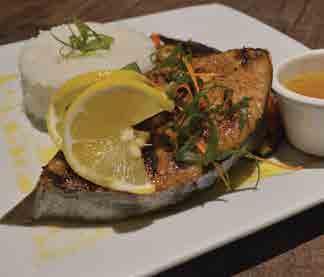
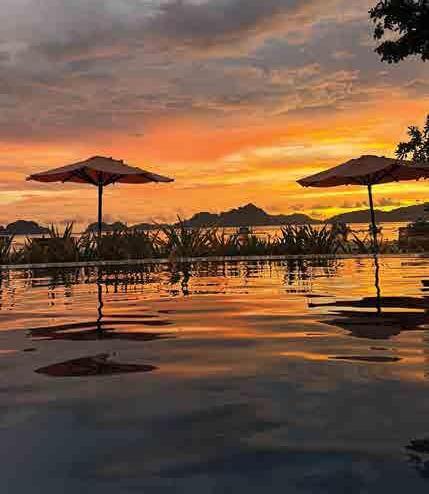



Elevating the Weekends Resort El Nido experience is its exclusive affiliate, Seven Commandos Beach.
“Island hopping, especially to the island of Seven Commandos, part of which is another property we have and one of the most beautiful islands in El Nido. It is a very busy area. We wanted it to be a welcome center for all the tourists of El Nido. Weekends was supposed to be a gateway to Seven Commandos, where we plan to build a resort as well in the future. But for now, Seven Commandos serves as a private beach area for our guests in Weekends,” Micki provides.
While Weekends Resort offers a luxurious haven, El Nido itself is a treasure trove of natural wonders and exciting activities. The resort offers various island tours to help guests explore the area’s stunning beauty, including visits to lagoons, beaches, and caves.
Weekends Resort El Nido is committed to sustainable tourism practices.
“As showcased by the resort, we have an abundance of shrubs, trees, and greens planted and placed around the property. These not only give an eco-friendly atmosphere, but also offer a fresher ambience, and actually adds to the luxurious feel of the resort,” Micki highlights. She also mentions their water conservation efforts: “We use recycled water to irrigate the plants and flush the toilets.”
Beyond environmental considerations, Weekends Resort El Nido is deeply invested in the local community.
“Well, obviously our bookings will earn us income, and that will give the community revenue in taxes. Also our guests are bound to spend as they explore El Nido, and this will benefit local workers and small businesses around the area frequented by tourists,” Micki explains.


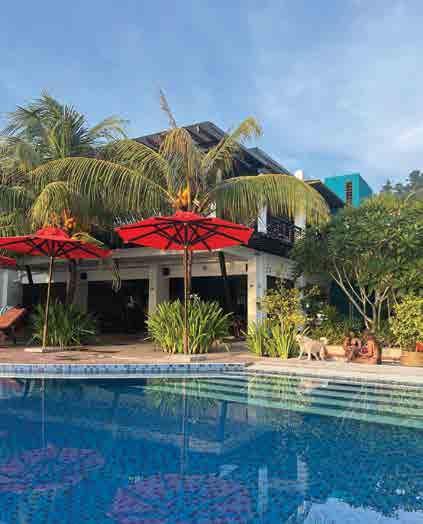
“A day at Weekends is a day that is memorable, fun, enjoyable, and relaxing,” Micki concludes.
For the discerning traveler seeking a harmonious blend of luxury, natural splendor, and authentic Filipino hospitality, Weekends Resort El Nido stands as a beacon of excellence. It’s not merely a destination, but a transformative journey that begins the moment you step onto its grounds. Here, the awe-inspiring beauty of Palawan serves as a backdrop to world-class amenities, creating a sanctuary where modern comforts and unspoiled nature exist in perfect harmony.
In this tropical haven, every detail has been carefully considered to ensure that your stay is nothing short of extraordinary. From the warmth of the staff to the innovative architecture, from the exquisite dining experiences to the thoughtfully curated activities, Weekends Resort El Nido doesn’t just meet expectations — it redefines them.
























Brittany by Vista Land: Reshaping luxury living for over 2 decades



For over two decades, Brittany Corp. has been reshaping the Philippine real estate scene with its portfolio of world-class luxury developments that continue to set the bar for upscale living.
Since its inception in 1993, the premium leisure and residential arm of Vista Land & Lifescapes Inc. has already been curating premier themed communities, inspired by some of the most sophisticated cities globally. Guided by the vision of Vista Land founder Manuel B. Villar Jr., Brittany’s mission is rooted in the belief that every Filipino deserves to enjoy world-class standards and elevated experiences.



Today, Brittany touts a distinguished portfolio boasting a collection of beautiful homes, condominium developments, and exclusive lot-only properties— bringing the world’s finest destinations right at your doorstep through beautiful masterpieces designed for the affluent few.
These prestigious addresses have since given thousands of discerning homebuyers contemporary spaces that do not only exude timeless elegance and refinement, but also ensure their safety, convenience and exclusivity. From Belle Reve and Promenade, among its first projects, Brittany has proven to offer refined lifestyles in places that nurture, entertain, and inspire others to also invest in an astoundingly luxurious environment meant for the privileged few.
In recent years, Brittany has all the more demonstrated its prowess, expertise, and adeptness in adapting to the evolving needs and shifting preferences of discerning homeowners. Through innovative design concepts, smart home features, and sustainable practices, Brittany’s developments have seamlessly adapted to
the demands of upscale modern living postpandemic, while highlighting functionality, efficiency, and environmental responsibility.
Crosswinds, for example, is a beautiful 100-hectare Swiss inspired development that is home to unique dining concepts, hotels, mid-rise residential towers, and other modern conveniences, set amid over 35,000 majestic pine trees. In the postpandemic era, Crosswinds stands as the quintessential community as it lets you revel in an idyllic rural lifestyle in a sophisticated setting.
Prospective homebuyers wanting a home in this beautiful enclave in Tagaytay can opt for the 2.8-hectare Alpine Villas, which features mid-rise residential towers in the style of Swiss chalet, or Lausanne, a 24-hectare development that offers prime lots within an exclusive community.
In Sto. Tomas, Batangas, Brittany is building the 25ha Pievana, which is poised to become a sprawling haven for wellness. It features high end mid-rise condominiums; grand residential lots with sizes up to 1,200 sqm; villas and spas; unique retail concepts; and lifestyle centers complemented by vast green spaces.
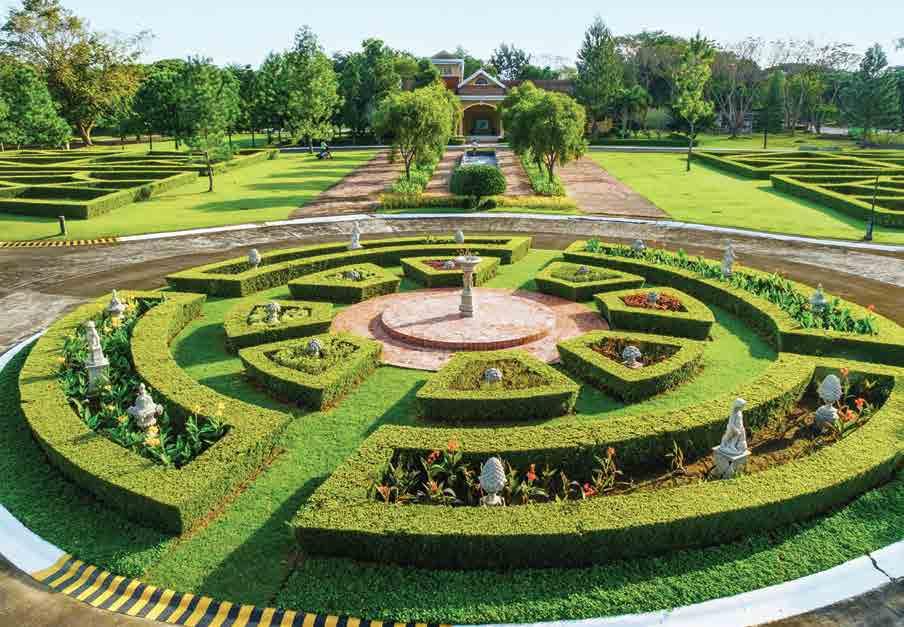

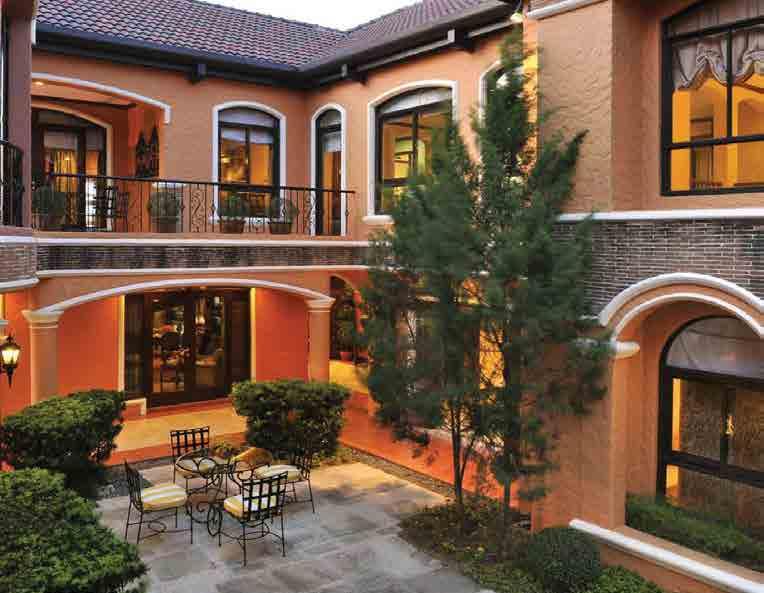
Located within Villar City in Las Piñas City, the 300-ha Portofino meanwhile exudes elegance and sophistication in every detail with its meticulous architecture, inspiring designs, and beautiful homes, whereas the 118-hectare Forresta will offer future homebuyers contemporary homes and modern hubs set amid a nature-inspired mixed-use development.
Bern Baguio is meanwhile a four-tower high-end condominium development in Baguio City that lets you bask in the luxury of a Swiss mountain lifestyle amid Cordillera’s green mountain idyll, whereas the Mansions at Pontevedra, located within the 34-hectare Pontevedra Estate in Sta. Rosa, Laguna, presents distinct neighborhoods and modern commercial spaces amid open courtyards and landscaped gardens.
Soon, Brittany will soon bring its brand of exquisite leisure developments to premier tourist destinations across the country, where discerning homebuyers and investors can indulge in a refined, bespoke lifestyle.

Exciting times are indeed up ahead for Brittany as it will now diversify to continue its legacy of crafting world class experiences in world class destinations, poised to once again exceed expectations of even the most discerning clientele.
For more information on Brittany Corporation’s collection of luxury properties, visit www.brittany.com. ph. You may also follow them on Facebook, Instagram, and YouTube.
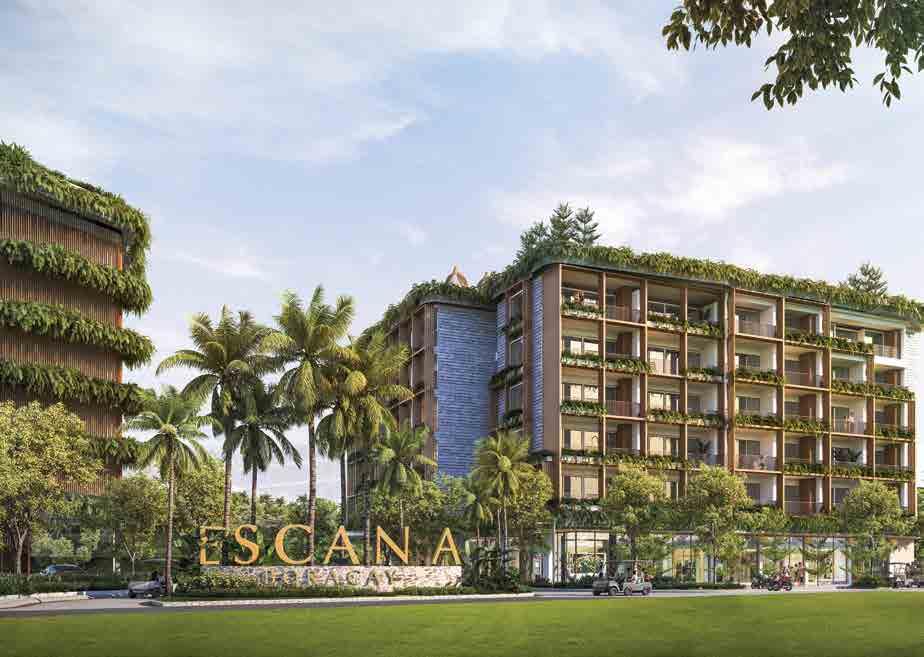



Embracing a lifestyle in the beautiful countryside has increasingly captivated many city dwellers.
And for a good reason. Idyllic locales like Boracay, Bohol and Palawan offer a unique blend of natural beauty and peace, providing the perfect escape from the urban hustle. Here, you can readily reconnect with nature and savor the more laidback, peaceful pace of countryside living, allowing you to achieve a balanced work-life harmony essential for your health and well-being.

It’s no wonder that more and more people are drawn to the tranquility of these famed destinations, seeking respite from the relentless pace of city life.


Recognizing this growing desire for tranquil living, leading property developers are now presenting unique opportunities to embrace the serene countryside lifestyle.
Brittany, the premium leisure and residential arm of Vista Land and Lifescapes Inc., is at the forefront of this movement. The company is extending its luxurious developments to some of the Philippines’ most iconic tourist spots, redefining “leisure destinations” with worldclass experiences, amenities, and views.
Brittany’s expertise in crafting exclusive communities shines through in these destinations. its sustainable architecture, thoughtful designs, and top-tier amenities are tailored to meet the highest standards of comfort and sophistication. Each enclave is designed to blend seamlessly with natural surroundings while providing unparalleled convenience and luxury to its residents.


In the tropical paradise of Boracay, Brittany brings its signature touch of elegance with the 5.1-hectare Escana Boracay.



Located in the secluded Station Zero, adjacent to the island’s most luxurious resorts, Escana Boracay offers a unique coastal lifestyle where nature and modern comforts converge. Residents here will enjoy breathtaking sunsets, crystal-clear waters, and powdery white sand, complemented by a host of top notch amenities.
To realize its vision, Brittany has collaborated with WOW Architects, a Singapore-based design consultancy known for projects like the award-winning St. Regis Maldives and Anantara Resort in Malaysia.


For Escana, WOW Architects has crafted a modern tropical biophilic residence inspired by the beautiful coastal scenery of Boracay—a design that brings together luxury, sustainability and ecological consciousness, ensuring residents enjoy an elegant lifestyle in harmony with nature.
Escana Boracay offers a variety of residential units spread across four six-storey buildings. From studio deluxe units (up to 38.70 sqm) to two-bedroom executive units (up to 92.53 sqm), each residence features a generous balcony that extends your living space, providing you with calming, panoramic hillside or sea views.
Beyond the stunning beachfront and breathtaking views, Escana Boracay also presents an array of upscale amenities designed for your relaxation and rejuvenation. The Seacoast area offers beach walking trails, a spa, recreational areas,



and beachfront lounges. Residents can likewise unwind in the gardens, along the jogging path, at the pool deck and bar, or in the infinity edge pool and sky garden.
Escana Boracay, no doubt, embodies the quintessential countryside retreat, providing an idyllic sanctuary where the allure of nature and the conveniences of contemporary living come together seamlessly—essentially offering an exquisite lifestyle steeped in elegance and tranquility.

Truly, Escana has everything the heart needs to call it a home. All that it’s waiting for is you.
For more information on Brittany’s collection of luxury properties, visit www.brittany.com.ph and follow them on Facebook, Instagram, and YouTube.





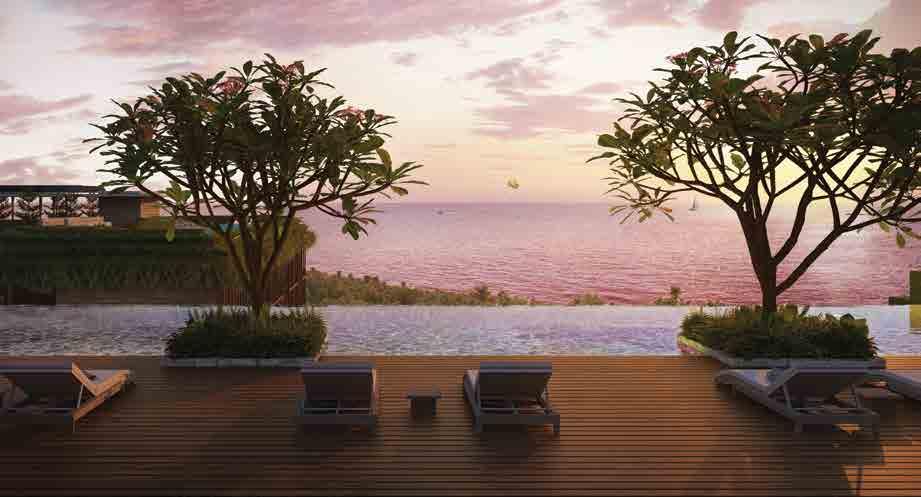

“
It transforms everyday living into a beautiful lifestyle and wellness experience.
Brittany, the leisure and premium residential arm of Vista Land and Lifescapes Inc., continues to set the standard for upscale living in the Philippines as it not only draws inspiration from some of the world’s most beautiful cities, but also integrates wellness into its developments. Offering the right mix of luxury, nature, and wellness, Brittany has been delivering distinct lifestyles that enrich lives in myriad ways.
Indeed, Brittany transforms living into an art form, masterfully blending elegance, comfort, and holistic well-being in every enclave—evident in its stunning architecture and design, elegantly curated natural spaces, verdant pocket gardens, and state-of-theart amenities. Each neighborhood was designed to nurture both body and soul.
The neighborhoods, for example, have been inspired by iconic destinations, enabling residents to live in charming streets reminiscent of San Francisco, soak in the romantic allure of Italy, or revel in the tranquil beauty of Swiss landscapes. All are designed to offer a visual feast and a haven of tranquility at the same time.
Within these communities meanwhile are stunning homes that offer a respite. Spacious interiors, elegant finishes, and premium materials create a living space that is both stylish and functional.
Outside, residents are treated to breathtaking views of greenery, as nature plays a central role in Brittany’s developments. Lush green spaces, meticulously landscaped gardens, and tree-lined avenues create a serene environment where residents can reconnect with nature. Whether it’s a morning jog through verdant parks, an afternoon spent in a community garden, or an evening walk amid scenic landscapes, residents are constantly surrounded by nature’s beauty.
In creating its communities this way, Brittany champions holistic wellness.
Brittany transforms living into an art form across its wellness communities
Wellness centers, meditation gardens, jogging and biking trails, and outdoor fitness zones are strategically incorporated to promote mental and emotional well-being. These spaces provide residents with areas to relax, meditate, and rejuvenate, fostering a sense of peace and balance in their daily lives. At the same time, it can serve as areas to converge among families and friends.
Complementing these open spaces and gardens are top tier facilities that promote physical wellbeing. State-of-the-art fitness centers, expansive swimming pools and sports courts make it convenient for residents to keep active and healthy. On top of these, recreational, retail and dining hubs offer modern leisure spaces for the residents.
Essentially, Brittany has long been creating wellness lifestyle communities in the country. This means, spaces proactively designed and built to support holistic health of residents—making it easier to promote well-being across all facets of everyday living.
This is evident in its existing projects such as the 124-hectare Swiss-inspired community that is Crosswinds in Tagaytay City, where residents and guests are embraced by the grandeur of 35,000 majestic pine trees, breathtaking scenes, lush nooks and gardens, chalet-inspired homes, as well as retail and dining hubs integrated seamlessly into this exclusive community.
And its up and coming developments promise the same—from Bern, the four-tower residential development promising exceptional living experiences in the Philippine Summer Capital to Forresta, a 119-ha mixed-use expanse offering verdant landscapes and a beautiful forest in the city. This ultra luxurious project, which will have high rise residential towers and premium villages, is situated within Villar City, a 3,500-ha emerging mega development connecting 15 towns and cities across Metro Manila and Cavite.



Living in a Brittany community is truly more than just having a beautiful home—it’s about experiencing beauty every single day. Charming neighborhood cafes, vibrant community events, tranquil parks, and scenic walking paths enhance the daily lives of residents.
Such thoughtfully designed communities foster a sense of belonging and offer a distinct lifestyle that is as enriching as it is beautiful.
Indeed, with Brittany, it’s life made beautiful.
For more information on Brittany’s collection of luxury properties, visit www.brittany.com.ph and follow its Facebook, Instagram, and YouTube accounts.

By Billy De La Cruz

The Philippines is a nation of contrasts and wonders. This archipelagic country boasts a diverse landscape that has captivated explorers, scientists, and tourists for centuries. From towering volcanoes to pristine coral reefs, from mystical rivers to surreal hill formations, the country offers a tapestry of natural beauty that few places on Earth can match.
The Philippines’ location along the Pacific Ring of Fire has shaped its dramatic landscapes. Volcanic activity has created majestic peaks and fertile valleys, while tectonic forces have sculpted
breathtaking cliffs and hidden caves. The country’s tropical climate, coupled with its complex geography, has resulted in a land of extraordinary natural phenomena, from underground rivers to islandstudded lagoons.
But the wonders of the Philippines extend beyond its physical beauty. The islands have been inhabited for thousands of years, giving rise to a rich tapestry of cultures and traditions. This long history of human habitation has led to fascinating interactions between people and their environment, resulting in unique cultural
landscapes that blend natural and human elements in harmonious ways.
In this journey through the Pearl of the Orient Seas, we’ll explore seven awe-inspiring natural wonders. Each of these sites tells a unique story of geological forces, ecological diversity, and the intricate relationship between the land and its people. As we delve into these marvels, we’ll uncover not just their physical beauty, but also their cultural significance, scientific importance, and the challenges they face in a changing world.
Beneath the crystal-clear waters of the Sulu Sea lies a marine wonderland that rivals the most spectacular coral reefs on the planet. Tubbataha Reef, a UNESCO World Heritage Site since 1993, is a biodiversity hotspot that showcases the richness of the Philippines’ marine ecosystems.
Spanning an impressive 97,030 hectares, Tubbataha is actually composed of two large atolls and a smaller reef, all of which are the peaks of extinct underwater volcanoes. This isolation has allowed Tubbataha to maintain its pristine condition, making it a critical habitat for a vast
array of marine life.
The numbers speak for themselves: Tubbataha is home to an astonishing 600 fish species, 360 coral species, 11 shark species, and 13 dolphin and whale species. It also serves as a nesting ground for hawksbill and green sea turtles. The reef’s biodiversity is not just impressive in terms of numbers, but also in its ecological importance. It acts as a crucial source of larvae for fisheries throughout the Sulu Sea, supporting both marine ecosystems and local livelihoods.
Divers from around the world flock to Tubbataha between March and June
when the seas are calmest. Due to its remote location, visitors must join liveaboard diving expeditions, typically lasting a week. These trips offer a unique opportunity to explore one of the last untouched coral reef systems in the world.
An intriguing fact that adds to Tubbataha’s allure is that it’s one of the few places on Earth where you can witness both sunrise and sunset from the same spot in the middle of the sea. This unique feature, combined with the reef’s spectacular underwater scenery, creates an almost otherworldly experience for visitors.
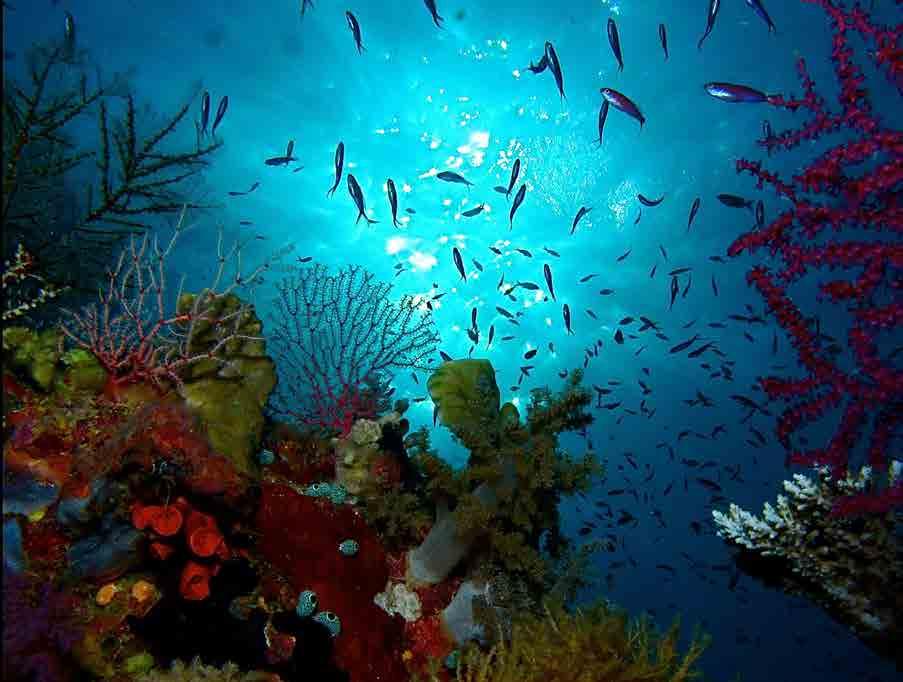




In the rugged Cordillera mountains of northern Luzon, the Banaue Rice Terraces stand as a testament to human ingenuity and harmony with nature. Often called the “Eighth Wonder of the World,” these terraces were carved into the mountainsides by the Ifugao people over 2,000 years ago, using primitive tools and an intricate irrigation system that continues to function today. The terraces follow the natural contours of the mountains, creating a stepped appearance that stretches as far as the eye can see. This feat of ancient engineering not only provided a solution for farming on steep slopes but also created a landscape of breathtaking beauty.
The terraces represent a harmonious blend of physical, socio-cultural, economic, religious, and political environments.
The United Nations Educational, Scientific and Cultural Organization (UNESCO) recognized the significance of the Banaue Rice Terraces in 1995, designating them a World Heritage Site. This distinction has helped to preserve not just the terraces themselves, but also the rich cultural heritage of the Ifugao people who continue to maintain them using traditional farming methods passed down through generations.
Visitors to Banaue can immerse themselves in this living cultural landscape. Trekking through the
terraces offers a unique opportunity to witness traditional farming practices and interact with local communities. The best times to visit are during the planting season in April or the harvest in October when the terraces transform into a lush green amphitheater or a golden cascade respectively.
A fascinating tidbit that underscores the scale of this wonder: if the stones used in the terraces were laid end to end, they would encircle half the globe. This fact not only highlights the immense labor involved in their creation but also the ingenuity of the Ifugao people in transforming a challenging terrain into a productive and sustainable agricultural system.
Taal Volcano, located on Luzon island, holds a unique place among the world’s volcanoes. Despite its modest height of only 311 meters, it’s considered the world’s smallest active volcano and one of the Philippines’ most dangerous.
What makes Taal truly remarkable is its complex structure. It’s a volcano within a lake, within a larger volcano. The main crater lake contains its own small island, creating a mesmerizing landscape that draws thousands of visitors each year.
Taal’s volatile nature is evident in its history. With 34 recorded eruptions since 1572, it’s the second most active volcano in the Philippines. Its most recent major eruption in January 2020 served as a stark reminder of its power, forcing thousands to evacuate and dramatically altering the surrounding landscape.
Despite its dangerous reputation, Taal Volcano and its surrounding caldera were declared a national geological monument in 1967 due to their unique beauty
and scientific importance. The area offers various activities for visitors, from hiking to the crater to boat rides on the lake.
A lesser-known fact about Taal is that the lake surrounding it, Taal Lake, was once connected to the sea. Previous eruptions closed off this connection, eventually turning the saltwater into freshwater. This geological history has led to the evolution of unique species, including one of the world’s rarest sea snakes that has adapted to freshwater.





In the heart of Bohol province lies a landscape so surreal it seems plucked from a fantasy novel. The Chocolate Hills, a collection of 1,776 perfectly coneshaped mounds spread across 50 square kilometers, create a topography unlike anywhere else in the world. These unusual formations are the result of millions of years of geological processes. Experts believe they were formed by the weathering of marine limestone on top of an impermeable layer of clay. Over time, the elements sculpted these limestone deposits into the uniform, conical shapes we see today.
The hills derive their name from their appearance during the dry season, typically from December to May, when the lush green grass covering them turns a rich chocolate brown. This transformation creates a striking visual effect, with the hills resembling rows of chocolate drops dotting the landscape.
Declared the country’s third National Geological Monument in 1988, the Chocolate Hills are currently on the UNESCO World Heritage Site tentative list. This recognition underscores not just their unique beauty, but also their geological and scientific
significance. Visitors can best appreciate this natural wonder from the observation deck in Carmen town. The panoramic view from this vantage point allows one to truly grasp the scale and uniformity of the hills. For the more adventurous, ATV tours offer a chance to get up close and personal with these geological marvels. Interestingly, local folklore offers a more romantic explanation for the hills’ origin. One legend tells of a giant who fell in love with a mortal woman. When she died, the giant wept, and his tears dried to form the Chocolate Hills.
Rising majestically from the plains of Albay province, Mayon Volcano is renowned worldwide for its near-perfect conical shape. Often called the “Mount Fuji of the Philippines,” Mayon’s symmetry is a rare geological feat that has captivated observers for centuries.
Mayon is an active stratovolcano, having erupted over 50 times in the past 400 years. Its most destructive eruption occurred in 1814, burying the town of Cagsawa and killing more than 1,200 people. Today, the ruins of
Cagsawa Church, with only its bell tower remaining above ground, serve as a somber reminder of the volcano’s power.
Despite its destructive potential, Mayon’s beauty and the fertile soil it provides have fostered a complex relationship between the volcano and the people living in its shadow. The volcano and its surrounding landscape were declared a national park in 2000 and are currently on the UNESCO World Heritage Site tentative list.
While climbing to the summit is restricted due to
volcanic activity, visitors can enjoy various activities around its base. ATV rides offer an exhilarating way to explore the lower slopes, while nature treks allow for a more intimate experience with the local flora and fauna.
A linguistic note adds another layer of interest to Mayon: its name derives from the Bicolano word “magayon,” meaning beautiful. This name perfectly encapsulates the dual nature of the volcano –a force of both creation and destruction, awe-inspiring in its beauty and power.



Off the coast of Pangasinan province, the Hundred Islands National Park presents a seascape of otherworldly beauty. This protected area comprises 124 islands at low tide (123 at high tide), scattered across the emerald waters of Lingayen Gulf.
The islands, with their distinctive mushroom-like shapes, are the product of millions of years of geological processes. They began as ancient coral reefs that were gradually pushed above sea level by tectonic movements. Over time, erosion sculpted them

into their current forms, creating a landscape that seems almost too perfect to be natural.
Declared a national park in 1940, the area now serves as an important marine sanctuary and ecotourism destination. The islands and the waters between them are home to a diverse array of marine life, making them a paradise for snorkelers and divers.
Visitors can explore the islands through various activities. Islandhopping tours allow you to visit multiple islands in a day, each offering
its own unique charm. Some islands feature pristine beaches perfect for swimming and sunbathing, while others offer caves to explore or cliff jumping for the adventurous.
An interesting tidbit about the Hundred Islands is that they’re not actually a hundred in number. The name was likely chosen for its poetic quality rather than numerical accuracy. The changing tide creates a dynamic landscape, with some smaller islands disappearing and reappearing with the ebb and flow of the sea.

No exploration of the Philippines’ wonders would be complete without mentioning its greatest asset: its people. The Filipino population, with its incredible diversity and world-famous hospitality, leaves an indelible impression on visitors from around the globe.
The Philippines is home to over 100 ethnic groups, each with its own unique traditions, languages, and customs. This cultural mosaic creates a vibrant and dynamic society that foreigners often find fascinating and welcoming.
Many international visitors are struck by the genuine warmth and friendliness of Filipinos.
James O’Connor, an Irish tourist, shared his experience: “I’ve traveled to many countries, but the hospitality I encountered in the Philippines was truly exceptional. Everywhere I went, from bustling Manila to remote villages, I was greeted with smiles and a willingness to help that felt incredibly sincere.”
The concept of “Filipino hospitality” goes beyond mere politeness. It’s deeply ingrained in the culture, stemming from values like “bayanihan” (communal unity) and “pakikisama” (companionship and getting along with others). Emily Chen, a Taiwanese-American expat living in Cebu, noted, “What amazed me was how quickly Filipinos make you feel like family. I was invited to countless homes for meals and celebrations within weeks of arriving.”
Foreigners often comment on the Filipinos’ ability to maintain a positive outlook despite challenges. Hans Mueller, a German
businessman, observed, “The resilience and optimism of the Filipino people are remarkable. Even in the face of natural disasters or economic hardships, they manage to smile and look for silver linings. It’s truly inspiring.”
The linguistic diversity of the Philippines also impresses many visitors. With over 180 languages spoken in the archipelago, many Filipinos are multilingual. This, combined with widespread English proficiency, makes communication easy for most foreign visitors. Fatima Al-Sayed, a Kuwaiti tourist, remarked, “I was surprised by how easily I could converse with locals, even in rural areas. Their command of English and eagerness to communicate made my trip so much more enriching.”
Filipino cuisine, a reflection of the country’s history and cultural diversity, is another aspect that foreigners rave about. From adobo to lechon, the variety of flavors often leaves a lasting impression.
Jean-Pierre Lefebvre, a French chef who visited for a culinary tour, shared, “The complexity of flavors in Filipino cuisine is underappreciated globally. Each region has its specialties, and the way Filipinos gather around food speaks volumes about their culture of sharing and community.”
Many visitors also note the Filipinos’ love for music and celebration. Fiestas are an integral part of Filipino culture, with each town having its own patron saint and corresponding festival. Olivia Thompson, an Australian backpacker, recounted, “I happened to
be in a small town during their fiesta, and despite being a complete stranger, I was pulled into the celebrations. The joy, the music, the dancing – it was an unforgettable experience of Filipino hospitality at its finest.”
The impact of Filipino warmth often extends beyond vacation experiences. Many foreigners who have lived or worked in the Philippines speak of lasting friendships and a sense of belonging.
Park Min-joon, a South Korean entrepreneur, shared, “What started as a business trip turned into a second home for me. The relationships I’ve built here, the way Filipinos have embraced me – it’s changed my perspective on community and belonging.”
The story of the Philippines is ongoing. It’s a narrative of resilience in the face of natural forces, of human ingenuity working in harmony with the environment, and of the enduring capacity of nature to inspire awe and wonder. As visitors, researchers, or admirers from afar, we all have a role to play in ensuring that these marvels continue to thrive and inspire for generations to come.
As we conclude our journey through the natural and cultural wonders of the Philippines, it’s clear that while the country’s landscapes are breathtaking, its people are its true treasure. The Filipino spirit of hospitality, resilience, and joy leaves an enduring impact on those who experience it, making the Philippines not just a place to visit, but a place to connect, learn, and find a home away from home.



The Philippine tarsier, a tiny primate native to Bohol, continues to draw both scientific interest and tourist attention in 2024. These nocturnal creatures, famous for their enormous eyes, have become a major attraction for visitors to Bohol, rivaling even the iconic
by Billy De La Cruz
crucial for understanding their mating habits and group dynamics, aspects of tarsier life that were previously shrouded in mystery.

Tarsiers possess truly remarkable eyes. Each eyeball is fixed in its socket and measures about 16 mm in diameter - proportionally the largest of any mammal relative to body size. Fascinatingly, a tarsier’s eye actually outweighs its entire brain. To compensate for their fixed eyes, tarsiers can rotate their heads nearly 180 degrees, allowing them to scan their environment effectively.
Recent studies conducted by the University of the Philippines have revealed that tarsiers communicate using ultrasonic vocalizations, a discovery that provides new insights into their social behavior. This finding is significant for understanding their mating habits and group dynamics, which were previously difficult to observe in the wild.
Recent studies by the University of the Philippines have unveiled that tarsiers communicate using ultrasonic vocalizations, shedding new light on their social behavior. This discovery is
In response to growing tourist interest, the Bohol Tarsier Conservation Area has expanded its protected zones by 15% in 2024, now encompassing approximately 167 hectares of forest habitat. New regulations limit tourist groups to a maximum of 6 people per guide, with strict rules against flash photography and a mandatory 2-meter distance from the tarsiers. Tarsiers are the world’s only fully carnivorous primates, primarily feeding on insects and small vertebrates. They need to consume about 10% of their body weight daily - a significant amount given their small size of just 8.5-16 cm in length and 80-160 grams in weight.
Climate change poses a significant threat to tarsiers, altering rainfall patterns and affecting their forest habitat and prey populations. Conservationists are developing climateresilient forest corridors to help these creatures adapt.
Despite increased protection efforts, the Philippine tarsier remains classified as “Near Threatened” on the IUCN Red List. Population estimates are uncertain, but experts believe there may be fewer than 10,000 individuals left in the wild.
Ongoing research focuses on tarsier breeding patterns, habitat requirements, and responses to
environmental changes. Scientists are employing non-invasive monitoring techniques, including infrared cameras and acoustic sensors, to gather data without disturbing these sensitive animals.
As Bohol strives to balance ecotourism with conservation, the Philippine tarsier has become a flagship species for broader biodiversity protection efforts. Visitors to the island now often plan their trips to include both the geological marvel of the Chocolate Hills and the biological wonder of the tarsiers, making these wide-eyed primates ambassadors for Philippine wildlife conservation.




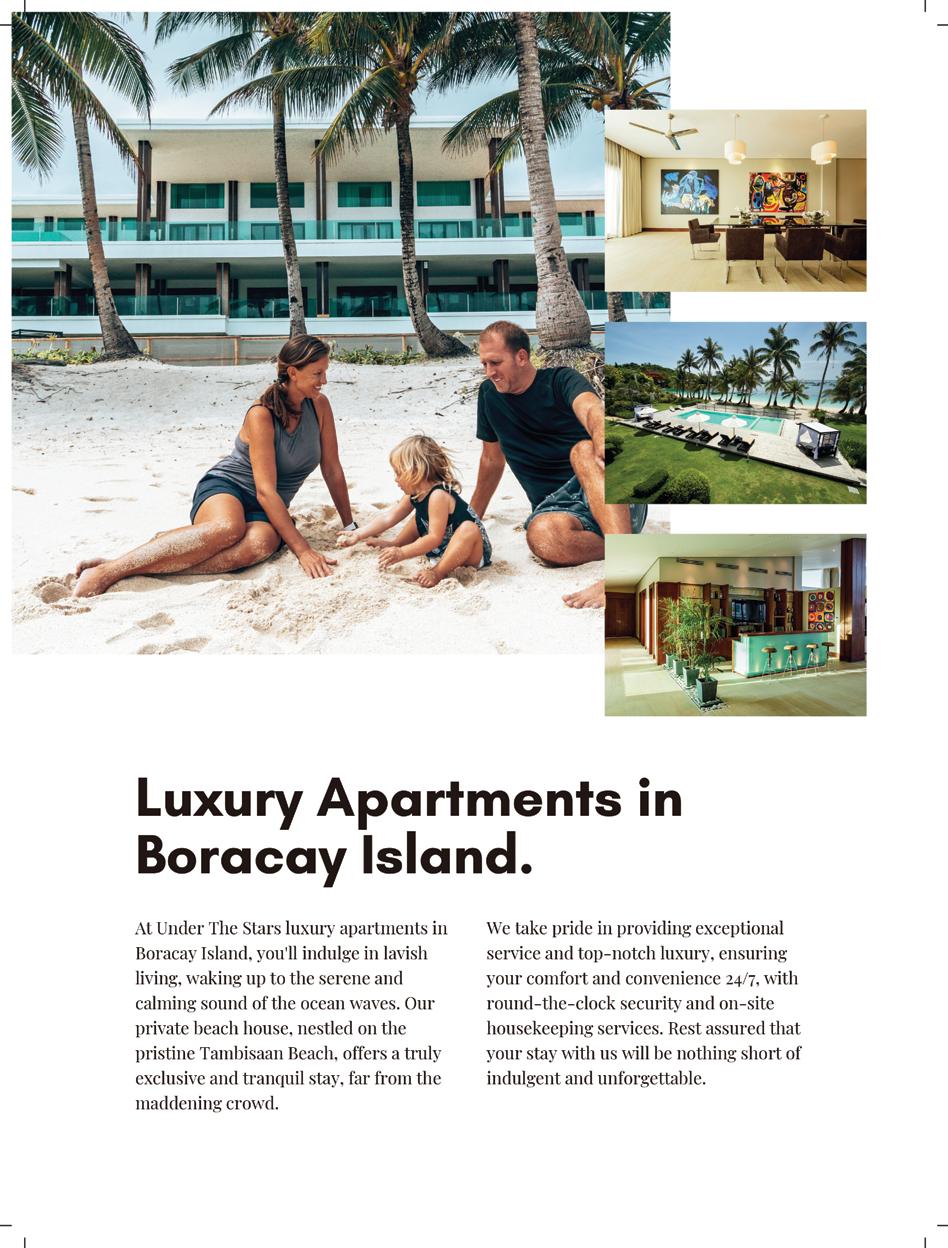


by Billy De La Cruz
The Philippines has emerged as one of the top destinations for retirees seeking an affordable tropical paradise. With its low cost of living, beautiful beaches, warm weather, and established expat communities, it offers an attractive retirement haven.
Here are the 10 best places to retire in the Philippines along with descriptions and a rundown of the pros and cons of each spot.
The national capital region offers a cosmopolitan lifestyle with modern amenities, world-class healthcare facilities, large expat communities, endless dining, shopping and entertainment options.
Pros: Best hospitals, most amenities, huge expat community, many modern comforts
Cons: Heavy traffic, higher costs, overcrowding, pollution
The “Queen City of the South” is a vibrant urban center located on Cebu island near beach resorts and scenic waterfalls.
Pros: Beachside lifestyle, lively entertainment, good healthcare, major airport
Cons: Crowding, pollution, frequent tropical storms, some high costs
1 2 3 1
Enjoy a cool, pine-scented mountain climate and laidback vibe in this city known as the “Summer Capital of the Philippines.”
Pros: Spring-like weather year-round, outdoor activities, reminiscent of American South, artistic culture
Cons: Far from beaches, limited healthcare facilities, minimal urban amenities
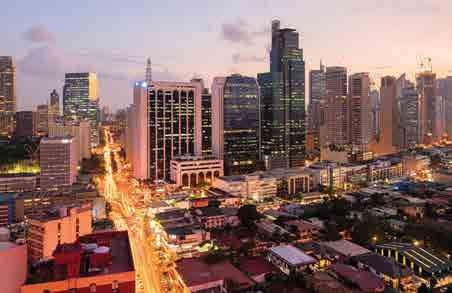
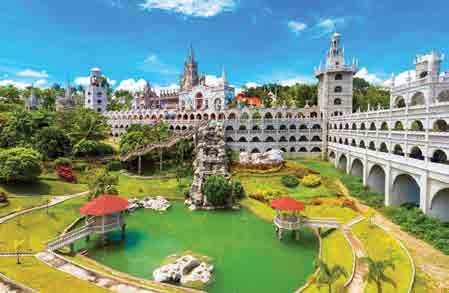
2 3

This university town on the island of Negros offers quiet island living at some of the Philippines’ lowest costs of living.
Pros: Very affordable, relaxed lifestyle, near beach resorts, youthful vibe
Cons: Limited quality healthcare, far from major airports, basic amenities
A scenic mountain town south of Manila offering incredible views of Taal Volcano and Lake.
Pros: Cool climate, affordable cost of living, beautiful nature areas nearby
Cons: Far from beaches, limited quality healthcare facilities, long drive to Manila
An economic and cultural hub in the Visayas region featuring lively downtown areas and historic colonial architecture.
Pros: Low cost of living, friendly vibe, quality hospitals and healthcare, river esplanade
Cons: Limited international air routes, urban crowding and traffic
4 5 6 7
The main city on the island of Palawan, it offers a gateway to the area’s incredible natural splendor and famed beaches.
Pros: Near stunning Palawan beaches, relatively safe, rapidly developing city
Cons: Limited amenities and healthcare, far from major cities, undeveloped in areas 4 5 6 7




Located on the island of Mindanao, it’s the largest city in the Philippines with cleaner air and lower crime rates.
Pros: Modern amenities, low pollution, lower costs, proximity to Mt. Apo
Cons: Distance from most international airports, security concerns in region
This waterfront city is located near the former US naval base of Subic Bay and caters to expat retirees.
Pros: Lower costs, expat-oriented amenities, oceanside location, near Subic
Cons: Seedy areas, isolated location, extremely hot and humid, limited healthcare
8 9 10
The “City of Smiles” serves as the economic hub of the sugarproducing Negros island.
Pros: Low living costs, relaxed vibe, near beaches, international airport
by Billy De La Cruz
As you approach your golden years, the idea of retiring in the Philippines may be an appealing prospect. With its beautiful beaches, vibrant culture, and low cost of living, the Philippines has become an increasingly popular retirement destination. However, proper planning is crucial to ensure a smooth transition and a comfortable retirement experience. In this article, we’ll provide you with a comprehensive checklist to help you prepare for your retirement journey in the Philippines.
RESEARCH YOUR VISA OPTIONS
• Determine the appropriate visa for your retirement in the Philippines.
• The Special Resident Retiree’s Visa (SRRV) is a popular option for foreign retirees.
• Familiarize yourself with the visa requirements, such as minimum age, income, and deposit requirements.
PLAN YOUR FINANCES
• Estimate your monthly living expenses, including housing, utilities, food, healthcare, and leisure activities.
• Ensure you have a steady stream of income from your retirement accounts, pensions, or other sources.
• Understand the tax implications for your retirement income and assets in the Philippines.
• Consider opening a local bank account and transferring funds to manage your expenses.
ARRANGE FOR HEALTHCARE COVERAGE
8
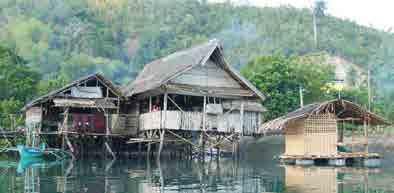

Cons: Limited healthcare options, lack of major amenities, hot and humid 9 10
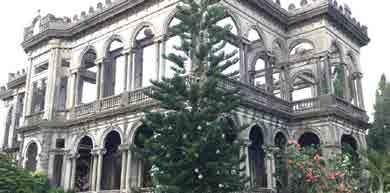
With so many diverse, affordable, and scenic destinations, the Philippines is an attractive retirement option. From bustling cities to laid-back island living, the hard part is choosing which of these tropical spots best fits your retirement dreams and lifestyle.
• Research healthcare options in the Philippines, including private insurance and government programs.
• Investigate the availability and quality of medical facilities in your desired retirement location.
• Consider purchasing international health insurance for comprehensive coverage.
PREPARE YOUR HOUSING
• Decide whether you want to rent or purchase a property in the Philippines.
• Explore different regions and cities to find the best fit for your lifestyle and budget.
• Familiarize yourself with the local real estate market and property ownership laws.
ORGANIZE YOUR DOCUMENTS
• Gather and organize all necessary documents, such as birth certificates, marriage certificates, and proof of income.
• Obtain certified copies of important documents and have them authenticated if required.
• Ensure your passport is up-to-date and valid for the duration of your stay.
PLAN FOR YOUR MOVE
• Determine what belongings you want to bring with you and make arrangements for shipping or storage.
• Research reliable international moving companies and obtain cost estimates.
• Explore options for shipping or storing vehicles, if applicable.
BUILD A SUPPORT NETWORK
• Connect with expat communities or forums to learn from others who have retired in the Philippines.
• Establish contacts with local service providers, such as lawyers, accountants, and real estate agents.
• Identify English-speaking communities or groups in your desired retirement location.
TIE UP LOOSE ENDS AT HOME
• Cancel or transfer utilities, subscriptions, and memberships as needed.
• Notify financial institutions, government agencies, and others about your move.
• Ensure your legal and financial affairs are in order before your departure.
EMBRACE THE ADVENTURE
• Approach your retirement in the Philippines with an open mind and a spirit of adventure.
• Be prepared to adapt to a new way of life and embrace the local culture.
• Stay flexible and enjoy the journey as you embark on this exciting new chapter.
By following this comprehensive checklist, you’ll be well-prepared to make the most of your retirement in the Philippines. Remember, proper planning and research are essential for a smooth transition and a fulfilling retirement experience in this beautiful country.



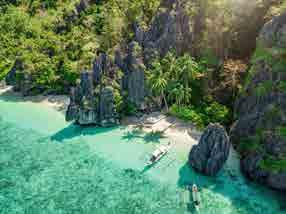














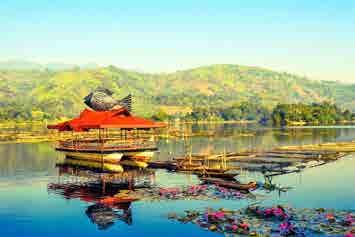









One of the biggest financial and lifestyle decisions anyone will face is purchasing their dream home. For some, the struggle is real when deciding which to purchase between a condominium unit or a standalone house and lot. Both options have their advantages and drawbacks, and the ideal choice often comes down to specific needs, preferences, and budget. Here’s a look at some of the key factors to weigh.
In most Philippine cities, condominiums tend to have significantly lower upfront costs compared to a singledetached house and lot of comparable size and quality. Condo units are inherently smaller, plus you don’t have to purchase land, making the initial investment lower.

by Kendrick Tan

However, condo association fees and other monthly dues can add considerable recurring expenses that cut into longterm affordability. Single-family homes don’t have association fees, though property taxes and maintenance still apply.
One major advantage of condominium living is very little maintenance. Buildings have staff for security, cleaning common areas, landscaping, etc. You only need to maintain the interior of your unit. With a house, you’re fully responsible for all interior and exterior upkeep and repairs.
On the flip side, condo dwellers have minimal control over building operations and policies set by the association. In a house, you can make any changes or renovations you wish.

Condo units are famous for their lack of living space compared to houses of a similar market price. You sacrifice significant indoor square footage as well as outdoor space and privacy that come with a detached house and lot. However, condos maximize efficient use of limited space through smart design.
Condominiums in the Philippines often have attractive amenity offerings like swimming pools, gyms, function rooms, playgrounds, and more included through association fees. They’re also situated in accessible urban areas near business districts, schools, hospitals, and shopping.
Houses are closer to traditional neighborhood life, but lack shared amenities and often require driving farther for daily needs depending on location. You may need to purchase additional club memberships for similar recreation amenities.
Historically, house and lot properties have seen higher appreciation over the long term in the Philippine real estate market. However, condo units in prime areas can potentially outpace that growth over shorter periods. Both require researching the specific location and developments planned nearby.

At the end of the day, carefully consider your lifestyle priorities. Condos offer low-maintenance metropolitan living, while houses provide personal space and privacy plus a sense of community. The decision comes down to which setup best suits your season of life and personal vision of home.
There are plenty of great reasons why families choose either condos or houses in the Philippines. Weigh the financial realities against your current needs and future plans to decide which is the smarter investment and living situation for you.
For many Filipinos, owning a home is the ultimate dream. But once the finances are in order, one of the biggest decisions is whether to purchase a condominium unit or go for a house and lot. Both options have their merits and downsides depending on your specific needs and lifestyle. Here’s a look at the key factors to weigh between condo living and a single-detached home.

units are designed for efficient use of tight quarters, with little to no outdoor space. Houses offer significantly more interior square footage plus a private yard.
However, condos maximize amenities like shared pools and green spaces to offset the lack of private outdoor areas. Those seeking utmost privacy may prefer the detached nature of a house and lot.
Condo living is extremely low maintenance. Owners are free from landscaping, security, and other exterior upkeep since these expenses are covered by association fees. Meanwhile, homeowners must handle all repairs and maintenance for their entire property themselves.

In most major Philippine cities, condominiums represent a much lower entry point in terms of upfront purchase costs. Condo units are typically priced cheaper than comparable singledetached houses since you own airspace versus land. However, condos come with recurring association fees for maintenance and amenities that can add up over time.
While house and lot packages require bigger downpayments, there are no monthly association charges. However, you’re responsible for all maintenance, repairs, and property taxes yourself.
One of the biggest cons of condo living is the limited living space compared to a house of a similar price point. Condo

On the other hand, condos bring strict rules set by associations regarding noise, guests, renovations, etc. Houses provide full freedom over your personal space.
Most Philippine condos come equipped with great amenities like swimming pools, gyms, play areas, and function rooms included through dues. They’re also built in central areas near offices, malls, hospitals, and recreation for urban conveniences.
Stand-alone houses are situated in more traditional neighborhood settings, often requiring driving to reach everyday needs. Many gated subdivisions provide recreation amenities for an added cost.
Historically, house and lot properties have tended to appreciate better over longer periods, as land scarcity drives up values. But condos in central business districts sometimes outpace that growth over shorter windows based on market hotness.


At the end of the day, the condo vs house decision comes down to analyzing priorities like space, privacy, security, amenities, location, and longterm costs based on your specific life stage and lifestyle goals. Weigh the pros and cons carefully before investing in your dream home.
Both condos and houses can make great residential options in the Philippines. It’s crucial to realistically assess your budget, living needs, and anticipated future plans when evaluating which property type is the wiser long-term investment.




by Liana Sagun
From staycations and road trips to getaways and coastal cruises, summertime offers the chance to escape and unwind with a much needed (and deserved) vacation. However, for people living with health conditions like heart disease or stroke, leaving home can pose special challenges.
As travel season takes shape, the experts at the American Heart Association - celebrating 100 years of lifesaving service as the world’s leading nonprofit organization focused on heart and brain health for all - recommends a few important tips to ease on-the-go woes.
“As we look forward to summer, many people will be traveling to spend treasured time with family and friends, or maybe just to enjoy some relaxation on the beach,” said Gladys Velarde, M.D., FAHA, professor of medicine and national volunteer with the American Heart Association. “It’s not always that simple for people who have chronic health conditions that require multiple medications or special medical equipment. There are also considerations for how to maintain your health and not put yourself at increased risk.”
Velarde said that doesn’t mean travel is off limits if you have a chronic health condition. A little planning and preparation can reduce stress and prepare you for your next big adventure.
Speak with your primary care physician or specialist about your travel plans and any special considerations related to your health. He or she can offer guidance on any restrictions or precautions you should keep in mind. Carry a list of all medications, including dosages and pharmacy information. Also consider carrying a copy of key medical records and a list of phone numbers, including your doctors and emergency contacts.

Ensure medications are clearly labeled and that you’ve packed enough to last the entire trip. If you’re traveling across time zones, enlist your health care provider to help adjust medication schedules. Some medications require refrigeration; research how to pack them appropriately for airport security and make sure you’ll have a refrigerator in your lodging.
Whether you’re traveling by plane, bus, train, cruise ship or other means, it’s paramount to plan ahead for special medical equipment. For example, if you use a wheelchair, walker or other assistance for getting around, you may need to check in with the travel company to find out how to properly transport your devices.
During this especially busy travel season, planning ahead can make the airport experience easier. If you have a pacemaker or implantable cardioverter-defibrillator, you may need to go through a special security
screening. Walking through a crowded terminal can take its toll, so consider requesting a wheelchair or courtesy cart to get to your gate when booking your ticket.
Long flights may increase your risk for blood clots, including deep vein thrombosis and pulmonary embolism. Consider wearing compression socks and walk around the cabin while it’s safe and allowed to help improve your circulation.
While it’s always important to know the signs of heart attack, stroke or cardiac arrest, it’s particularly critical while away from home. If you or someone you’re with experience symptoms, call 911. Many airports even offer kiosks where you can learn Hands-Only CPR while waiting for your flight.
“Every individual’s condition is unique, and you’ll want to tailor your travel plans to your specific needs,” Velarde said. “By taking a little time now to plan and prepare, your vacation can be just what the doctor ordered to help you unwind and recharge.”



"As a CPA, I am trained to observe deadlines, such as in preparing and submitting on-time books of accounts, financial statements, and especially those being required by the regulatory bodies The correlation of numbers is meaningful to me for numbers would tell me if something is right or wrong. Because of the work attitude that I acquired, I am able to thrive in a very stressful environment. It guided me on what direction to take. But there are occasions we cannot avoid, there are deviations from the normal things that we do," elucidates Salvador. She continues: "LIC is born out of the requirement of a bank. It was considered a good the a It a o p p o r t u n i t y f o r t h e o w n e r s w h o u s e d t o own a bank. Through the years, it has distinguished its presence in the domestic niche and stays ahead of competitors through sound and conservative underwriting practices."

The LIC's products and services manifest its tireless passion and unwavering commitment to its target clientele. This non-life insurance company offers the following products: motor car and property insurance; CGL (comprehensive general liability); engineering; marine; personal accident; property floater insurance; cybercrime insurance; and bonds/suretyship
It also offers, says Salvador, various PA-based products such as Rider Pal; PayAssure; Liberty moms; terminal illness COVID-19 insurance; travel assistance; kasambahay insurance.
Lastly is the MePets insurance which covers personal accident insurance for humans and pets (dogs or cats) together under one policy.
"You may say this is an out-of-the-box, and challenging, idea, but pets are family," says CEO Salvador, a mother to four bright, g ro w n - u p c h i l d re n w h o a re a l l p ro f e s s i o n a l s .
"After all, pets make things more fun and b r i g h t
"After all, make h when they are around, so it is just as right to keep
As to how having an effective corporate social responsibility (CSR) program contributes positively to all stakeholders and to the organization itself, she says that this is one way a company has to give back to society the blessings it has reaped through the years - to integrating social and environmental concerns in their business operations and interactions with their stakeholders instead of only considering economic profits They do regular medical missions and gift-givings to orphanages, accept requests from other organizations, and encourage employees to participate in outreach activities in the provinces. So, its CSR philosophy is to extend its hand to our less fortunate brethren in the best way it can muster.

Thanks to the wonders of technology, especially during the COVID-19 pandemic days, LIC has survived as what in the insurance world calls "the last man standing", the survivor of a battle when everybody else has fallen
Further, LIC believes in building strong strong p a r t n e r s h i p s f
it consistently takes time to provide personalized attention and only gives honest information and advice to each of its clients.
"Our solid corporate values and good business ethics are what guide us as committed and responsible partners. We look after the welfare of our policyholders by providing compensation for property losses and a high degree of efficiency in honoring our commitment to clients," says Salvador with a sweet, wide smile.
By Kendrick Tan
In kitchens across the Philippines, from bustling Manila markets to quiet provincial homes, a culinary renaissance is underway. It’s not about trendy superfoods or Instagram-worthy presentations. Instead, Filipinos are rediscovering the wellness wisdom woven into their culinary heritage—a philosophy that views food as a holistic path to well-being.
Filipino cuisine blurs the line between food and pharmacy. Many traditional dishes are prepared not just for their flavor, but for their perceived healing properties. Sinigang, the country’s beloved sour soup, is a prime example. This tamarind-based broth is a go-to remedy for colds and flu, believed to clear sinuses and boost immunity.
Tinola, a ginger-infused chicken soup, is traditionally served to new mothers during their postpartum recovery.
The ginger is thought to promote healing and restore energy, showcasing how Filipinos have long understood the importance of nutrition in recovery.
But the list of healing dishes doesn’t end there. Arroz caldo, a comforting rice porridge, is often prepared for those recovering from illness, its easy-to-digest consistency and warming properties making it a natural choice for convalescence. Mongo guisado, a mung bean stew, is rich in protein and fiber, and is believed to aid in detoxification and improve circulation.
For digestive issues, Filipinos turn to dishes like pinakbet, a vegetable medley that includes bitter melon, known locally as ampalaya. This bitter vegetable is thought to help regulate blood sugar and improve gut health. Even desserts play a role in wellness: champorado, a chocolate rice porridge, is often fortified with malunggay (moringa) leaves, adding a nutritional boost to this comforting treat.


The heartwarming arroz caldo is typically topped with hard-boiled eggs, a squeeze of calamansi, and a sprinkle of green onions and toasted garlic, creating a harmonious blend of flavors and textures.
A beloved Filipino dish, sinigang is a tantalizing symphony of sour and savory flavors. This comforting soup is traditionally made with tender pork or succulent shrimp, simmered to perfection with a medley of fresh vegetables like radish, eggplant, and long beans. Its signature tang comes from tamarind, giving the broth a delightful zing that dances on the taste buds.





Beyond single-ingredient remedies, Filipino wellness cuisine emphasizes balance—a concept nutritionists are only now fully appreciating. The traditional Filipino meal structure, with its array of dishes served family-style, allows diners to intuitively create their own equilibrium of flavors and nutrients.
A typical Filipino meal might include a soup (like sinigang), a grilled or fried protein (such as inihaw na isda or crispy pata), a vegetable dish (perhaps pinakbet or chopsuey), and always a serving of rice. This diverse spread ensures a mix of textures, flavors, and nutrients. The sourness of sinigang might be balanced by the richness of crispy pata, while the bitterness of ampalaya in pinakbet is offset by the sweetness of corn in the chopsuey.
This approach contrasts sharply with Western obsessions over counting macros or adhering to strict dietary rules. Instead, it encourages mindful eating, allowing diners to listen to their bodies and create a plate that satisfies both nutritional needs and personal cravings. The result is a meal that nourishes not just the body, but also the soul, fostering a healthier relationship with food.
What sets Filipino food-as-medicine apart is its spiritual dimension. Many families still begin meals with a prayer, a practice that aligns with modern concepts of mindful eating. This moment of gratitude and reflection before meals can be seen as a form of mealtime meditation, potentially aiding digestion and fostering a deeper connection with food.
Even ingredients carry spiritual weight. Coconut, ubiquitous in Filipino cooking, is also central to many rituals and ceremonies. Its use in daily meals creates a unique synergy between nourishment and cultural identity.
Perhaps the most powerful wellness aspect of Filipino cuisine is its emphasis on communal dining. In an age where loneliness is considered a health epidemic, the Filipino practice of sharing meals takes on new significance. These shared experiences foster social connections and emotional well-being, aligning with recent research highlighting the importance of community in maintaining good health.


As the world grapples with diet-related health issues, Filipino cuisine offers valuable lessons in the interconnectedness of food, spirituality, and healing. Wellness retreats featuring Filipino healing foods are emerging globally, and high-end restaurants are beginning to offer Filipino-inspired “wellness tasting menus.”
The core principles of Filipino culinary wellness— balance, mindfulness, and community—offer a holistic approach to nourishment that addresses physical, spiritual, and emotional needs. As we continue to explore the connections between diet and health, the wisdom embedded in Filipino culinary traditions may well provide valuable insights for a more balanced and wholesome approach to eating and living.
In essence, Filipino cuisine reminds us that true wellness isn’t found in a pill or a powder, but in a humble bowl of soup, lovingly prepared and joyfully shared. It’s a testament to the power of good food, made with intention, and enjoyed in good company—a simple yet profound recipe for health and happiness.

Pakbet, also known as Pinakbet, is a vibrant Filipino vegetable stew that bursts with flavors and colors. This beloved dish is a hearty mix of fresh, locally-sourced vegetables such as eggplant, bitter melon, okra, squash, and string beans, all simmered together in a rich, savory shrimp paste sauce. Each bite offers a delightful blend of textures and tastes, from the tender vegetables to the umamipacked sauce.


By Aliana Neri
Continuing the exploration of the mythical and profound, I am thrilled to present the latest additions to the “Fortuitous Basilisk” series by Anna Vergel RS. These new masterpieces delve deeper into the narrative of the pregnant dragon, expanding upon the themes of endurance, transformation, and the majestic essence of this mythical creature.
In this piece, the dragon’s scales shimmer with the essence of vast and contrasting landscapes, from scorching deserts to frozen lands. The intricate textures and bold colors convey a sense of majesty and resilience, symbolizing the dragon’s dominion over diverse terrains.
This artwork captures the fleeting moments of light reflected off the dragon’s scales amidst the desert sands. The subtle play of colors and textures evokes a sense of ephemerality and beauty, highlighting the dragon’s presence even in the most barren environments.
Depicting the dragon’s ascension towards the clouds, this piece embodies a dynamic and twisting motion. The monochromatic palette with hints of metallics suggests a journey of ascendance, strength, and the relentless pursuit of higher realms.
With a focus on the dragon moving through dense forest undergrowth, this artwork captures the quiet, crackling sounds of its passage. The use of earthy tones and textured brushstrokes brings to life the serene yet powerful movement of the dragon in its natural habitat.
This piece embodies the enigmatic nature of the dragon, capturing its haunting presence that is difficult to detect or grasp. The blending of purples, golds, and whites in the textured brushstrokes suggests a sense of mystery and the dragon’s elusive nature.
Depicting the dragon’s movement beneath the quiet sea, this artwork uses various shades of blue to evoke the serene yet powerful motion of the




Masters of the Sky: Soaring majestically over vast and scorching deserts and frozend lands.




dragon in the water. The textures and swirling patterns create a sense of depth and tranquility, reflecting the dragon’s interaction with the stillness of the sea. In these artworks, one can discern the ongoing narrative of the pregnant
dragon, now exploring the realms it inhabits. The intricate details and dynamic compositions symbolize the dragon’s strength, adaptability, and the timeless nature of its existence. As we stand on the brink of the Year of the Dragon, these pieces serve as a reflection on the layers of meaning embodied by the dragon. They remind us of the beauty born from diversity and the resilience inherent in the human spirit, much like the dragon’s journey through the different elements of its world.

By Joyce Balansag
Do thoughts of sunny days and luxurious pools fill your mind? It could be a signal that you’re ready to start anticipating your upcoming vacation. By starting your planning early, you can take advantage of great deals and have plenty of time to carefully research all your travel choices.
Dive into the world of travel possibilities with advice from our seasoned experts:
At the Alive! Restaurant, prepare to have your perception of vegan cuisine completely revolutionized. Here, plant-based eating isn’t a compromise — it’s a celebration of flavor, texture, and nutrition. Imagine savoring a raw lasagna made with paper-thin zucchini “noodles,” creamy cashew cheese, and a vibrant tomato sauce that bursts with flavor. Or indulging in a decadent chocolate avocado mousse that’s as rich and satisfying as any traditional dessert.
The Farm’s culinary philosophy goes beyond just serving delicious meals. You’ll have the opportunity to participate in cooking classes, learning how to prepare nutrient-dense, plant-based meals that you can easily recreate at home. The resort’s nutritionists work closely with the culinary team to ensure that every meal supports your wellness goals, whether you’re detoxing, managing weight, or simply looking to boost your overall health.
Choosing your travel destination is the initial hurdle, but with countless options available, it can be challenging to make a final decision. To get some inspiration, take a look at the trending travel destinations that are capturing the attention of many.
For example, Tripadvisor’s “World Trending Destinations” this 2024 include numerous international deinations, with Palawan claiming the fourth spot. The list included, Tokyo (Japan), Seoul and Jeju Island (South Korea), Halong Bay and Sapa (Vietnam), Bogota (Colombia), Pattaya (Thailand, Alajuela (Costa Rica), Phnom Penh (Cambodia), Kuala Lumpur (Malaysia), Viti Levu (Fiji), Chennai (India), Puebla (Mexico), Bandung (Indonesia), Panama City (Panama), Huaraz (Peru), Nairobi (Kenya), La Paz (Bolivia) and Port Ghalib (Egypt).

Whether you’re looking for an exclusive adults-only retreat or a delightful family-friendly holiday, there is an extensive array of all-inclusive resorts to cater to your desires. All-inclusives are renowned for their convenience and affordability, providing stress-free experiences with inclusive meals, drinks, and often activities.
Imagine a vacation where everything you could ever dream of is included in one incredible package. That’s what an all-inclusive package is all about! It’s like stepping into a world of endless possibilities, where you can dive into refreshing swimming pools, challenge yourself with exciting sports activities, and even join invigorating fitness classes. These packages are carefully crafted to ensure you have the time of your life while keeping your wallet happy. Get ready to indulge in a vacation filled with amazing amenities and unforgettable experiences!
Getting ready for a vacation, especially when you have kids in tow, can be quite a challenge. However, fret not! To make things easier, it’s all about smart packing. Take into account factors like the length of your trip, airline policies, and the activities you have planned for your family. Remember to pack essentials like an umbrella, especially if the weather at your destination tends to be unpredictable. Additionally, make the most of your luggage space by opting for travel-sized toiletries and keep your electronic must-haves, such as your mobile device, charger, and headphones, within easy reach in your carry-on bag.
Imagine whisking away to a tropical paradise at an allinclusive resort, where worries melt away and your wallet stays intact. While tipping is not obligatory at resorts, it’s customary to show appreciation for exceptional service by leaving a gratuity. Guests often choose to tip as a gesture of gratitude. When deciding on the amount, families should consider modest sums, like $1-5 per meal per person, and take into account the different levels of service they receive. It’s also wise to have some local currency on hand, as it makes tipping a breeze and ensures you have some spare cash for mementos and other delightful purchases.
Many travelers prioritize staying connected, but it’s wise to limit screen time for a more fulfilling vacation. Allocate a specific time, preferably in the morning, for emails and online activities before indulging in a relaxing day. While phones serve various purposes like capturing memories and seeking information, detaching from screens enables you to fully embrace the surroundings, bond with loved ones, and have a truly refreshing getaway.
Traveling with a group brings about a higher probability of encountering unforeseen circumstances that may disrupt your plans between the time of booking and your departure. Hence, it is prudent to adopt a “travel with confidence” approach and consider incorporating a travel protection plan into your reservations. This insurance grants travelers the freedom to cancel their trip for any reason, if required. Moreover, when journeying with a group, it is advisable to prioritize nonstop flights whenever possible. By doing so, you enhance the chances of staying together, leading to a more cost-effective and seamless travel endeavor.
While savoring refreshing afternoon cocktails by the resort pool is undoubtedly a well-deserved treat, why not take your destination vacation to the next level by adding a dash of excitement? Many incredible destinations offer specialized services to assist travelers in booking a wide range of thrilling adventures. From exhilarating catamaran cruises to invigorating hikes and everything in between, there’s something for everyone. By incorporating a tour into your leisure time, you’ll elevate your vacation experience and create lasting memories that will stay with you long after you’ve returned home.



By Billy De La Cruz
Amidst the verdant hills of Lipa, Batangas, a hidden sanctuary awaits—one that promises not just respite, but rebirth. The Farm at San Benito isn’t your typical retreat; it’s a crucible of transformation where the chaos of modern life dissolves into the rhythms of nature. As you pass through its gates, you’re not just checking into a resort—you’re embarking on a journey to rediscover your vital essence.
Imagine a place where the boundaries between luxury and wilderness blur, where cutting-edge wellness practices dance with age-old healing traditions. Here, 90 minutes from Manila’s frenetic pulse, 52 hectares of tropical paradise cradle a vision of holistic living that’s as ambitious as it is serene. Welcome to The Farm at San Benito, where every breath, every bite, and every moment is an opportunity to rewrite your story of health and vitality.
As you explore the grounds, you’ll find yourself captivated by the juxtaposition of sleek, modern structures against the backdrop of verdant jungles and the majestic Malarayat mountains. It’s as if the resort has grown organically from the earth itself, a testament to The Farm’s commitment to harmonizing with its natural surroundings.
The Farm’s approach to wellness is deeply rooted in the philosophy of integrative health, recognizing that true vitality comes from addressing the interconnected aspects of physical, mental, and emotional well-being. This holistic perspective is woven into every facet of the guest experience.




The Farm isn’t just about breathtaking vistas and luxurious accommodations. It’s a holistic sanctuary where ancient healing traditions meet cutting-edge medical science. Here, your wellness journey is guided by a team of internationally trained integrative medicine doctors, nutritionists, spa therapists, and fitness experts, all working in concert to help you achieve optimal health.
Your journey begins with a comprehensive health assessment, including state-of-the-art biomedical diagnostics and a wellness consultation with licensed physicians. This personalized approach ensures that every aspect of your stay is tailored to your unique health needs and goals.
One of The Farm’s crown jewels is its renowned detox cleanse program. Over the course of five transformative days, you’ll embark on a journey of deep cellular healing. But don’t worry – this isn’t about deprivation. Instead, you’ll be nourished by expertly crafted cleansing juices and guided through a series of treatments designed to purge toxins and revitalize your entire being.
The program includes colon hydrotherapy sessions to cleanse your digestive system, kidney and liver compress treatments to support detoxification, therapeutic spa treatments like lymphatic drainage massage, nutritional support with organic, cold-pressed juices and daily yoga and meditation sessions to balance mind and body.
For those looking to shed excess pounds or manage blood sugar levels, The Farm offers a comprehensive 7-day program. This holistic approach combines personalized meal plans featuring low-glycemic, plant-based cuisine, fitness sessions with certified personal trainers, stressreduction techniques like mindfulness meditation, medical consultations to address underlying health issues amd nutritional education to support long-term lifestyle changes.


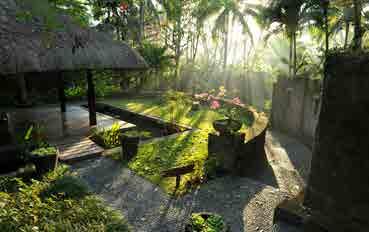
For those seeking a more intensive health overhaul, The Farm’s partnership with European Wellness offers cutting-edge cellular health programs. These innovative treatments delve into the very building blocks of your body, offering solutions for
- Immune Modulation: Boost your body’s natural defense systems
- Male and Female Revitalization: Address hormonal imbalances and age-related concerns
- Cellular Detoxification: Support your body’s natural cleansing processes at a cellular level
- Athletic Performance Enhancement: Optimize your physical capabilities naturally.



At the Alive! Restaurant, prepare to have your perception of vegan cuisine completely revolutionized. Here, plant-based eating isn’t a compromise – it’s a celebration of flavor, texture, and nutrition. Imagine savoring a raw lasagna made with paper-thin zucchini “noodles,” creamy cashew cheese, and a vibrant tomato sauce that bursts with flavor. Or indulging in a decadent chocolate avocado mousse that’s as rich and satisfying as any traditional dessert.
The Farm’s culinary philosophy goes beyond just serving delicious meals. You’ll have the opportunity to participate in cooking classes, learning how to prepare nutrient-dense, plant-based meals that you can easily recreate at home. The resort’s nutritionists work closely with the culinary team to ensure that every meal supports your wellness goals, whether you’re detoxing, managing weight, or simply looking to boost your overall health.



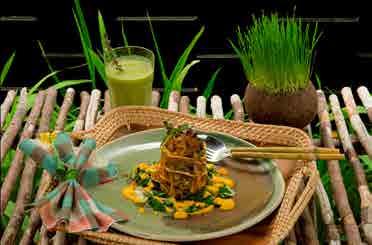



As the day winds down, treat yourself to one of The Farm’s signature spa treatments. The Healing Sanctuary Spa is a haven of tranquility where traditional Filipino healing practices meet modern therapeutic techniques. Some must-try experiences include:
- Hilot Massage: This centuries-old Filipino healing technique uses banana leaves to detect areas of imbalance in the body, followed by a deeply relaxing massage to restore harmony.
- Acqua Sanctuary: Immerse yourself in a series of hydrotherapy treatments, including a heated waterfall massage, jet pools, and a cold plunge to invigorate your circulation.
- Skin Kayud: A traditional Filipino body scrub using native ingredients like rice bran and coconut to exfoliate and nourish the skin.
- Native Alchemy Ritual: A luxurious treatment combining a coffee scrub, coconut oil massage, and a banana leaf wrap to detoxify and rejuvenate.


As your stay at The Farm draws to a close, you’ll find that you’re not just leaving with memories of a luxurious getaway. You’re departing with a profound shift in your approach to health and wellness. The Farm’s team ensures that you’re equipped with the knowledge and tools to continue your wellness journey long after you’ve left the resort. This includes personalized meal plans and recipes, at-home exercise routines tailored to your fitness level, stress management techniques for daily life and follow-up consultations to support your continued progress
The transformative power of The Farm at San Benito extends far beyond the boundaries of the resort. Many guests find that their experience catalyzes profound changes in their daily lives, inspiring them to prioritize self-care, make more mindful choices, and cultivate a deeper connection with nature and their own inner wisdom. The lessons learned and habits formed during a stay at The Farm often become the foundation for a lifetime of improved health and well-being.
Moreover, The Farm’s commitment to sustainability and eco-conscious practices serves as a model for responsible luxury tourism. By choosing to visit The Farm, guests not only invest in their own health but also support a vision of hospitality that honors and protects the natural world. This alignment of personal wellness with environmental stewardship creates a truly holistic approach to healing – one that recognizes the inseparable connection between individual and planetary health.
The Farm at San Benito isn’t just a destination – it’s a journey to your best self. It’s a place where the stresses of modern life melt away, replaced by a deep connection to nature and a renewed sense of wellbeing. Whether you’re seeking to address specific health concerns, break free from harmful habits, or simply rediscover your zest for life, The Farm offers a transformative experience that will resonate long after you’ve returned home.
Take the first step towards transforming your health and well-being today. Visit The Farm at San Benito’s website at www.thefarmatsanbenito.com to explore their programs, view breathtaking images of the resort, and book your life-changing retreat. Your path to vitality, balance, and holistic wellness awaits – seize this opportunity to invest in the best version of yourself.
By Billy De La Cruz
In the wake of a global shift towards remote work, a new breed of professionals has emerged: digital nomads. These location-independent workers are choosing to combine travel with their careers, and the Philippines is quickly becoming one of their top destinations. This archipelagic nation, known for its stunning beaches and warm hospitality, is now making waves in the digital nomad community.
The concept of digital nomadism isn’t new, but recent global events have accelerated its growth. According to a study by MBO Partners, the number of digital nomads surged by 49% between 2019 and 2020. This trend shows no signs of slowing, with the Asia-Pacific region, including the Philippines, seeing a significant influx of these modern wanderers.
The Philippines’ appeal to digital nomads is multifaceted. Dr. Maria Santos, a sociologist at the University of the Philippines, explains: “The combination of affordable living costs, widespread English proficiency, and a culture of hospitality makes the Philippines an ideal backdrop for the
interactions to professional settings, making it easier for nomads to network and potentially find local clients or collaborators.
3. Natural beauty and diversity. With over 7,000 islands, the Philippines offers an unparalleled variety of environments. From the urban hustle of Manila to the serene beaches of Palawan or the lush mountains of Baguio, digital nomads can find their ideal work setting.
4. Digital infrastructure. While historically a challenge, internet connectivity in the Philippines has seen significant improvements in recent years. Major cities and popular tourist destinations now offer reliable high-speed internet, a crucial factor for remote workers.
5. Visa flexibility. The Philippine government has recognized the potential of the digital nomad market. Recent changes in visa policies, including the introduction of long-term visitor visas, have made it easier for digital nomads to extend their stays legally.
The influx of digital nomads is
co-working facilities.
- Tourism: Digital nomads often explore beyond typical tourist routes, contributing to a more distributed tourism economy.
- Local Services: From language schools to fitness classes, services catering to expatriates are flourishing.
Dr. Carlos Mendoza, an economist at the Asian Institute of Management, is optimistic about the future: “If managed well, the digital nomad trend could significantly boost our service and tourism sectors. It’s an opportunity for the Philippines to position itself as a hub for remote work in Southeast Asia.”
However, the digital nomad boom isn’t without its challenges. Concerns about gentrification in popular areas and the potential strain on local infrastructure are topics of ongoing discussion. Additionally, there’s a need for clear regulations to ensure that digital nomads contribute fairly to the local economy through taxes and other means.
As remote work continues to reshape the global workforce, the


By Billy De La Cruz
In the bustling metropolis of Metro Manila, where traffic jams are a daily ordeal and the pace of life seems to accelerate relentlessly, stress has become an unwelcome companion for many residents. The constant rush, noise pollution, and high-pressure work environments can take a toll on both mental and physical well-being. However, with the right strategies, it’s possible to find calm amidst the chaos and lead a more balanced life in this vibrant urban jungle.
A recent study published in the Journal of Environmental Psychology (2023) found that residents of large Asian cities, including Manila, experience significantly higher levels of stress compared to their rural counterparts. The research, conducted by Dr. Maria Santos of the University of the Philippines, revealed that 78% of Metro Manila residents reported feeling “overwhelmed” or “highly stressed” on a daily basis. These findings underscore the urgent need for effective stress management techniques tailored to the unique challenges of urban living in the Philippine capital.
Here are some practical tips to help you navigate the stress of city life in Metro Manila:
1. Embrace the power of mindfulness. In a city that never sleeps, finding moments of stillness can be transformative. Mindfulness meditation, even for just 10 minutes a day, can help reduce stress and improve overall well-being. Find a quiet spot in your home or office, or use noise-cancelling headphones to create a peaceful environment. Apps like Headspace or Calm offer guided meditations specifically designed for busy urbanites.
2. Optimize your commute. Traffic is often cited as one of the biggest stressors in Metro Manila. Instead of letting it drain your energy, use your commute time productively. Listen to audiobooks, podcasts, or language learning programs. If you’re taking public transportation, try reading a book or practicing mindfulness exercises. For those who can, consider flexible work hours to avoid peak traffic times.
3. Create green spaces in your life. Metro Manila’s concrete jungle can leave residents feeling disconnected from nature. Incorporating plants into your living and working spaces can help reduce stress and improve air quality. Visit weekend markets in Makati or Quezon City to pick up some low-maintenance indoor plants. If possible, spend time in local parks like Rizal Park or La Mesa Eco Park to recharge your batteries.
4. Prioritize physical activity. Regular exercise is a powerful stress-buster, but finding time for it can be challenging in a busy city. Look for opportunities to incorporate movement into your daily routine. Take the stairs instead of the elevator, join a weekend sports league, or try out one of the many fitness classes offered in malls across the metro. Even a brisk 20-minute walk around your neighborhood can make a significant difference.
5. Connect with your community. Social connections
are vital for managing stress, yet the fast-paced city life can often lead to isolation. Make an effort to connect with neighbors, join local interest groups, or volunteer for community projects. Websites like Meetup.com offer various social gatherings and activities in Metro Manila, providing opportunities to build meaningful relationships.
6. Practice time management. In a city where time often feels like a scarce resource, effective time management is crucial. Use digital tools like Trello or Asana to organize tasks and prioritize your day. Learn to say no to nonessential commitments and focus on what truly matters. Breaking larger tasks into smaller, manageable chunks can also help reduce feelings of overwhelm.
7. Explore mindful eating. The abundance of food options in Metro Manila can be both a blessing and a source of stress. Practice mindful eating by savoring your meals without distractions. Take time to appreciate the flavors and textures of your food. Consider preparing meals at home when possible, using fresh ingredients from local markets. This can be a relaxing activity and help you maintain a healthier diet.
8. Cultivate a restful sleep environment. Quality sleep is essential for stress management, but the city’s noise and light pollution can make it elusive. Invest in blackout curtains, use white noise machines or apps, and establish a consistent sleep schedule. Limit screen time before bed and create a relaxing bedtime routine to signal to your body that it’s time to wind down.
9. Seek professional support. If stress becomes overwhelming, don’t hesitate to seek professional help. The stigma around mental health is decreasing in the Philippines, and there are now more resources available than ever. Many hospitals and clinics in Metro Manila offer counseling services, and online platforms provide access to mental health professionals from the comfort of your home.
10. Practice gratitude. In the midst of daily challenges, taking time to appreciate the positive aspects of city life can shift your perspective. Keep a gratitude journal, noting down things you’re thankful for each day. This practice can help counterbalance the negative effects of stress and foster a more positive outlook.
Living in Metro Manila doesn’t have to mean constant stress and exhaustion. By implementing these strategies and making self-care a priority, you can navigate urban life more effectively and find moments of peace in this dynamic city. Remember, managing stress is an ongoing process, so be patient with yourself as you develop new habits and find what works best for you.
As Dr. Santos notes in her study, “Creating pockets of tranquility in our daily lives is not just beneficial, but necessary for long-term well-being in urban environments like Metro Manila.” By taking proactive steps to manage stress, you can not only survive but thrive in the heart of this bustling metropolis.


Step into serenity at SansÂge Wellness & Advanced Aesthetics. Their state-of-the-art facility combines cutting-edge technology with a soothing ambiance, providing the perfect setting for your transformative journey. Dr. Michele Nuez, board-certified plastic and reconstructive surgeon, leads SansÂge with expertise and passion. Her commitment to advanced, European-sourced treatments ensures each client receives world-class care.
In the heart of bustling Makati City lies a sanctuary of transformation — SansÂge Wellness & Advanced Aesthetics. Led by esteemed Dr. Michele Nuez, a board-certified Plastic Reconstructive and Aesthetic surgeon, this clinic is redefining the landscape of aesthetic treatments and wellness in the Philippines by offering a curated symphony of treatments and products sourced from Europe.
A perfect skin, foremost, is a healthy skin. It is the quality of the skin that holds the secret to radiance. Begin your journey to a clear radiant skin with SansÂge’s innovative range of signature facial treatments: Givenchy Glow, SansÂge Signature French Facial, Lady of the Lake Hydrafacial and V Contour Facial.
The Givenchy Glow utilizes the New Cellular Treatment Factor (NCTF®), a patented mesotherapy product made in France which contains a blend of 59 potent antioxidants, essential nutrients, vitamins, amino acid and hyaluronic acid.
“This advance medical treatment is formulated to provides wrinkle improvement, cell regeneration for ageing skin and intense long-lasting skin hydration due to its high concentration of hyaluronic acid. Hyaluronic acid is a powerful moisturizing component of NCTF® that can hold up to 1000 times its weight in water. Immediate and visible results are seen even after a single treatment.” Dr. Nuez elaborates.
The innovative SansÂge Signature French Facial is a complete package that makes use of Algotherm’s dermocosmetics from France combined with personalized lymphatic drainage massage, extraction, masking and LED photo treatment. The Algotherm product line used in SansÂge Signature French Facial is a combination of 28 powerful marine biological extracts and dermatological active ingredients such as vitamin c and hyaluronic acid. Our skin therapists concentrate this “power of the sea” in addressing skin aging and various epidermal problems of the face.
“This treatment is truly transformative. This bespoke treatment promotes movement of lymphatic fluid in the head area which reduces puffiness in the face. A better blood flow and increased oxygen delivery leads to a healthier and glowing complexion.” Dr. Nuez explains to Balikbayan Magazine.





The Lady of the Lake Hydrafacial is inspired by the Taal Lake in Tagaytay where one of SansÂge branch is located. This treatment is a three-part facial regimen — cleansing, exfoliating, and then infusing the skin with intensive serums using a medical-grade hydradermabrasion device. The devise gently vacuums out the skin pores while simultaneously pushing in potent actives. This treatment is helpful for sun damage skin and is safe for all skin types creating a moisturized, bright and firm skin
For those seeking more dramatic results, the V Contour Facial is highly recommended for patient with mild-to-moderate or early signs of aging. A very high-intensity and highly focused sound waves is delivered through the skin creating a controlled micro trauma which heals with an explosion of collagen and elastin growth. Some patients see an initial effect right after their treatment, but the real results appear over 2-3 months as new collagen builds. The V Contour Facial can tighten the skin on the neck, reduce the appearance of jowls, lift drooping eyelids or eyebrows giving the benefits of a facelift without the need for surgery






SansÂge offers a variety of non-invasive body contouring treatments for clients seeking to refine their silhouette. The flagship SansÂge Perfect Sculpt program integrates targeted fat-reduction injections with ultrasound and radiofrequency therapy to sculpt specific areas with precision.
For premium body sculpting, the clinic proudly offers the AquaLipo. Aqualipo uses an innovative FDA approved product from Bologna Italy that is composed of plant-based compounds that dissolves the cell membrane of fat cells causing localized fat breakdown and reduction. “Our AquaLipo treatment has a proven track record of providing visible results,” Dr. Nuez explains. “It’s excellent for sculpting the back, chin, hips, knees, stomach and thighs for a more defined appearance.”
When it comes to facial contouring, we recommend the Face Nade Face Sculpting (FS) treatment using cutting-edge medicine from Spain. Face Nade FS is delivered through micro-injections and is a dual-action treatment based on a complex of active ingredients that promote lipolysis in the face and chin area. This treatment is specially designed to reduce double chins, sagging jawlines, and loss of facial definition.
Ideal facial silhouette is also achievable with volume loss correction due to aging. SansÂge has been using Germany made Hyabell filler for the last 4 years. The preference is due to Hyabell’s advanced cross-linking technology, which results in a smoother, longer-lasting effect compared to traditional hyaluronic acid fillers. Hyabell filler is injected in the nasolabial folds, midface, temples or lips to restore volume producing natural-looking results with minimal downtime. Hyabell coupled with the advance injector skills of the SansÂge doctor give remarkable results in restoring facial contours on both male and female patients.
Additional nonsurgical body contouring treatments available in the





also includes the use of neurotoxin Dysport, a product from UK. Injections with Dysport can make thick and stocky muscle contours look smoother and slimmer and can be used around the arms, calves, shoulder and jawline area.



Before and after results of the SansÂge Spanish Peel. This premium hyperpigmentation treatment, sourced from Spain, effectively targets dark spots and uneven skin tone, revealing a brighter, more clarified complexion.
SansÂge recognizes that personal aesthetics often intertwine with self-confidence. The clinic offers treatments for common concerns that, for some, can be sources of insecurity. Among these common but treatable concerns are pigmentation and pimples.
A standout treatment for pigmentation is the SansÂge Spanish Peel, a powerful de-pigmentation series of treatments that uses controlled chemical dermabrasion to lift away the top layer of dead skin cells. It is a customized process that uses the application of MeLine formulated products made in Spain.
“The peel is clinically proven to offer significant improvement in skin clarity and brightness. This is specially formulated for Filipino complexion struggling with uneven skin tone, melasma or stubborn dark spots.” Dr. Nuez explains.
Skin health is intricately linked to overall well-being, and clear skin is one of the body’s “visual certificates of health.” Acne is a bad skin problem that can influence an individual’s self-confidence. Individuals battling acne can avail of the SansÂge’s targeted counseling, medication and treatment for this worrisome condition. Breakouts and blemishes are effectively addressed by the clinic’s Anti Acne Facial and Acne IPL Therapy
Part of the comprehensive and holistic approach to wellness of SansÂge is its in-house spa and medical massage therapies. The ultimate goal of our medical massage treatment is to allow your body to heal whereas our spa services aims to reduce your stress, enhances relaxation, and relieve tension.
The SansÂge 8D Medical Massage combines traditional techniques with modern technology employing magnetotherapy and infrared therapy for treating acute or chronic muscle pain, inflammation and edema. Series of this treatment helps alleviate pain in the long-term.
“One of our sought after spa treatment is the Tok Sen Massage, also known as Hammer Therapy. “This ancient Thai technique involves rhythmic gentle tapping using a wooden hammer and wedge to create vibrations that penetrate deep into the muscles and fascia. These vibrations help release tension, improve circulation, and stimulate the body’s natural healing processes.” Dr. Nuez shares.
“Every patient’s anatomy, goals, and concerns are unique. We take the time to thoroughly understand each individual’s desires and then craft a treatment plan that aligns with their vision and lifestyle. At the heart of SansÂge’s practice is a comprehensive suite of non-surgical to surgical intervention designed to address a wide range of aesthetic concerns,” Dr. Nuez clarifies. “Often time we encounter patients who already maximized nonsurgical intervention and finally decided to step up their treatment plan to surgery. Conversely, we also have patients who stays with us long after their surgery to continue non-surgical treatments as a form of maintenance and prevention,” she adds.
Dr. Nuez’s surgical expertise spans a wide spectrum of surgical aesthetic enhancements like blepharoplasty, rhinoplasty, facelift, liposuction, breast augmentation and tummy tucks as well as reconstructive surgeries to address congenital anomalies or post-trauma deformities.
For patient opting to go under the knife, the doctor takes time to ensure that each patient fully understands the procedure, potential risks, and expected outcome. The clinic believes that a well-informed decisionmaking process is paramount, as surgical transformation is a significant step. In addition, the clinic offers support long after the surgery believing that a good post-op experience fosters enhanced emotional well-being during recovery.




Europe’s aesthetic medical industry is experiencing a remarkable growth in the last decade with Germany, France, the UK, Italy, and Spain being the the top five European country leaders. Despite this growth, Europe’s has maintained their rigorous regulatory environment. In fact, European skin care tends to be safer because Europe bans thousands of unsafe ingredients, many of which are allowed in non-European countries. Currently there’s around 1600 cosmetic ingredients banned in Europe.
Recognizing their reputation for stringent safety standards and innovative approaches in aesthetic medicine, SansÂge has adopted a European-centric approach in curating the products used in their treatments. The clinic features an array of advanced solutions, including premium dermal fillers sourced from top European manufacturers and innovative body contouring treatments developed in countries like Italy. Dr Nuez makes it a point to attend European aesthetic conventions on a regular basis to keep up with the latest products and techniques, offering SansAge patients access to treatments that may not yet be widely available elsewhere.

The true measure of SansÂge’s success lies in the enduring loyalty of its clientele. The clinic has cultivated a devoted following with an organic growth of SansÂge’s patient base through personal recommendations. Satisfied clients frequently become ambassadors for the clinic with many patients maintaining their relationships with Dr. Nuez and her team for years, even decades.This longterm commitment from clients serves as a powerful endorsement of the clinic’s consistent quality and results.
Recognition of Excellence: Adoderm Germany and Orient EuroPharma Platinum Partner Award for Outstanding Contribution
Whether you’re seeking a refreshing facial, a body-sculpting treatment, or a more dramatic transformation, SansÂge has the expertise and technology to help you achieve your goals.
Take the first step towards transformation today. Contact SansÂge Wellness & Advanced Aesthetics for a free consultation and start your journey to a more confident, radiant you. Your future self will thank you for the investment you make today.
To book your free consultation or learn more about SansÂge’s transformative treatments, visit www.sansage.ph, email geintouch@ sansage.ph, or call +63 926 312 2328.

by Billy De La Cruz
As the Philippines grapples with its unique geographical challenges and an overburdened healthcare system, telemedicine is emerging as a vital solution, bringing medical expertise to Filipinos across the archipelago. This digital health revolution, catalyzed by the COVID-19 pandemic, is making healthcare more accessible than ever before.
Accessing telemedicine services in the Philippines is straightforward. Popular platformsm SeeYouDoc can be downloaded from app stores on smartphones or accessed via web browsers. Users typically need to create an account, providing basic personal information and sometimes medical history. Patients can then schedule appointments with general practitioners or specialists, often within the same day. Video calls are the most common format for consultations, but some services also offer chat or voice call options.
To use telemedicine services, you’ll need a few essentials. A smartphone, tablet, or computer with a camera and microphone is crucial for video consultations. A stable internet connection is also vital to ensure a smooth interaction with your healthcare provider. Most platforms require a payment method, such as
credit/debit cards or e-wallets. It’s also helpful to have any relevant medical records on hand for reference during your consultation.
Telemedicine services in the Philippines offer a wide range of options. Beyond general consultations, patients can receive specialist referrals, mental health support, and even obtain e-prescriptions. Some platforms also facilitate lab test requests and provide medical certificates for minor conditions.
Cost-wise, telemedicine often proves more affordable than in-person visits. Consultation fees typically range from PHP 300 to PHP 1000, depending on the specialist. Encouragingly, some PhilHealth packages now cover telemedicine services, and several HMOs have incorporated telehealth benefits into their plans, making it even more accessible.
The legal framework for telemedicine in the Philippines is evolving to keep pace with its growth. The Department of Health has issued guidelines for telemedicine practice through Joint Memorandum Circular No. 2020-0001, ensuring the quality and safety of these services. Patient privacy is protected under the Data Privacy Act of 2012, which covers information shared during
teleconsultations.
Despite its rapid growth, telemedicine faces several challenges. Internet connectivity in rural areas remains a concern, and there’s a digital literacy gap, particularly among older populations. Moreover, certain medical conditions still require inperson examinations, limiting the scope of telemedicine.
Looking to the future, the prospects for telemedicine are bright. As technology advances, we can expect to see integration of AI for preliminary diagnoses, wearable devices for remote monitoring, and possibly even telesurgery. The Philippine government is also working on improving digital infrastructure to support the growth of telemedicine.
Telemedicine is not just a stopgap measure but a glimpse into the future of healthcare in the Philippines. By embracing this technology, Filipinos can access quality healthcare from the comfort of their homes, whether they’re in the heart of Metro Manila or on the shores of far-flung islands. As awareness grows and technology improves, telemedicine is set to play an increasingly crucial role in the Philippine healthcare landscape, bringing the nation one step closer to universal health coverage.





Non-comedogenic!
Say goodbye to clogged pores
Aloe Vera provides soothing relief for sun-exposed skin

Ultimate protection with Titanium Dioxide
Affordable without compromising quality





Experience skin healing with Vitamin E
Optimal coverage with SPF70




by Liana Marie Sagun
Whether you’re a globe-trotting executive or a vacationer crossing continents, adjusting to new time zones can wreak havoc on your sleep patterns. But fear not, weary traveler! With the right sleep hygiene practices, you can reset your body clock and conquer jet lag like a pro.
A recent study published in the New England Journal of Medicine in 2023 sheds new light on combating jet lag. Researchers found that strategically timed light exposure can significantly reduce recovery time from jet lag. As lead author Dr. Elizabeth Klerman notes, “Properly timed light exposure can shift the circadian clock twice as quickly as previously believed.”
With this in mind, embrace the power of light. Upon arrival at your destination, try to get some natural sunlight during the day. This helps signal to your body that it’s time to be
awake. Conversely, avoid bright lights in the evening to help your body prepare for sleep.
Timing is everything when it comes to meals and exercise. Try to eat and work out according to the local schedule, even if your body is telling you otherwise. This helps your internal clock adjust more quickly to the new time zone.
Hydration plays a crucial role in combating jet lag. While it’s tempting to rely on caffeine to stay awake or alcohol to fall asleep, both can disrupt your sleep cycle. Instead, stick to water and herbal teas to keep your body hydrated and primed for rest.
Creating a sleep-friendly environment is essential. Use earplugs, an eye mask, or white noise to block out unfamiliar sounds and lights in your new surroundings. If possible, adjust the room temperature
to a cool, comfortable level for optimal sleep.
Consider melatonin supplements, but use them wisely. Melatonin can help reset your body clock, but timing is crucial. Consult with a healthcare professional about when to take it based on your travel schedule and destination.
Finally, be patient with yourself. It typically takes about one day per time zone crossed for your body to fully adjust. In the meantime, short power naps (20-30 minutes) can help combat daytime fatigue without interfering with nighttime sleep.
By incorporating these sleep hygiene tips into your travel routine, along with the latest scientific insights on light exposure, you’ll be well on your way to enjoying your destination – fully awake and refreshed. Sweet dreams and safe travels!



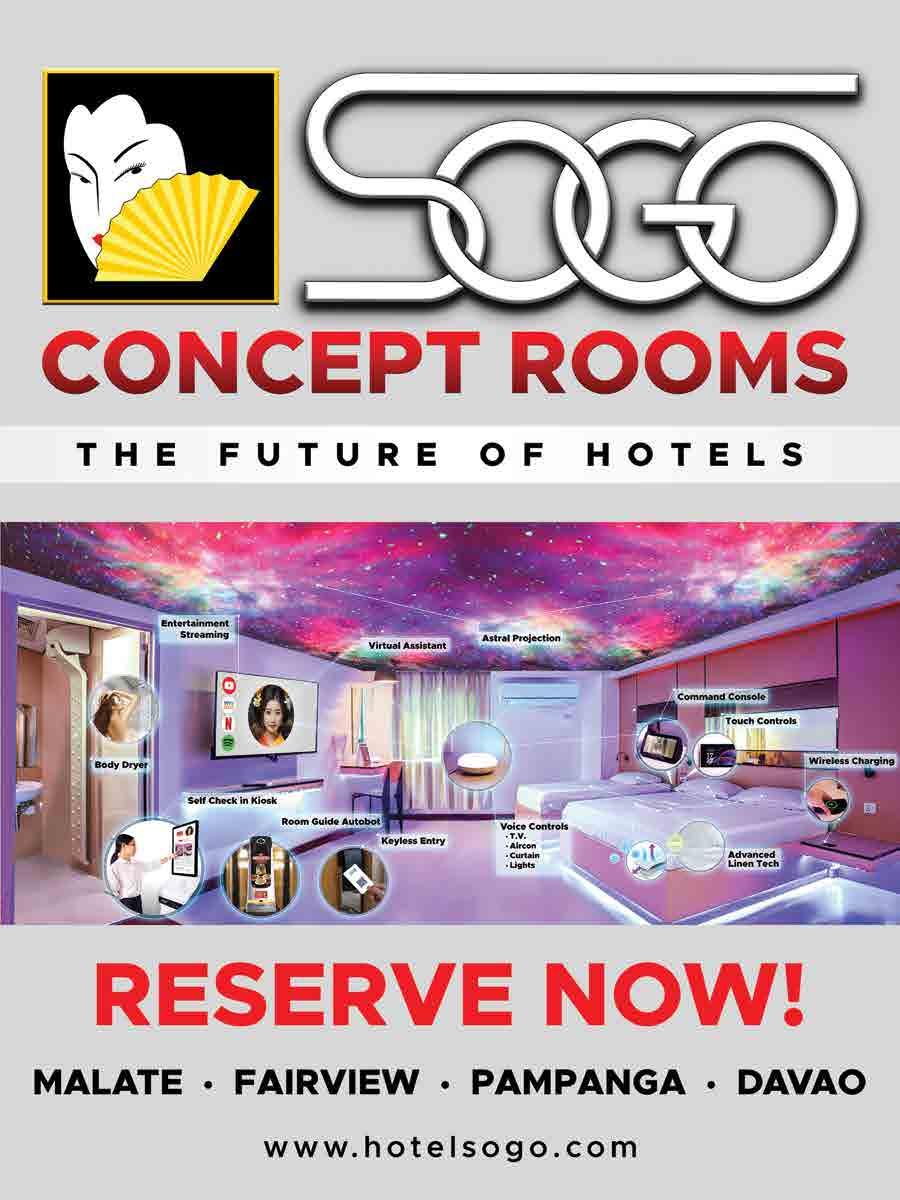
by Billy De La Cruz
In recent years, surfing has seen a dramatic surge in popularity across the country. This archipelagic nation, blessed with extensive coastline, offers a diverse range of surfing experiences for enthusiasts of all levels. The growth of surf tourism has not only put the Philippines on the global surfing map but has also provided economic benefits
to coastal communities, fostering local businesses and creating job opportunities.
Surfing offers numerous benefits to those who take up the sport. It’s an excellent full-body workout that improves cardiovascular fitness, strengthens core muscles, and enhances balance and coordination. Beyond the physical aspects, surfing
Siargao, shaped like a teardrop, is often referred to as the “Surfing Capital of the Philippines.” Its most famous break, Cloud 9, has hosted international surfing competitions and is renowned for its thick, hollow tubes. The island’s laid-back atmosphere, crystal-clear waters, and lush landscapes make it a paradise for surfers and non-surfers alike. Beyond surfing, visitors can explore the stunning Sohoton Cove, relax on the pristine beaches of Naked Island, or enjoy the vibrant nightlife in General Luna.
provides mental health benefits, reducing stress and anxiety through connection with nature. The sport also instills a deep appreciation for marine ecosystems, often leading surfers to become advocates for ocean conservation.
Let’s dive into some of the best surfing destinations the Philippines has to offer:
Best time to visit: September to November (peak season) Wave details: 2-3 meters high, with the famous Cloud 9 break offering powerful right-hand barrels Difficulty level: Intermediate to advanced
Other attractions: Island hopping, Magpupungko Rock Pools, Sugba Lagoon



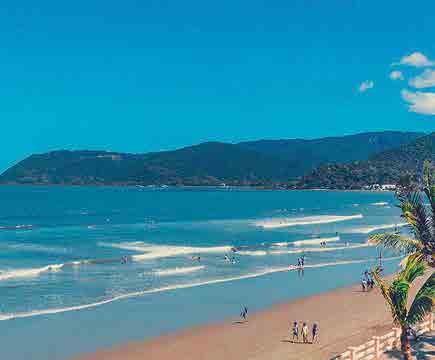
Affectionately known as “Elyu” by locals and regular visitors, La Union has become a favorite weekend getaway for Manila urbanites. Urbiztondo Beach in San Juan is the heart of the surfing scene, lined with surf schools, hostels, and hip cafes. The province has cultivated a vibrant surf culture, blending traditional Filipino hospitality with a cool, modern vibe. Besides surfing, visitors can enjoy a thriving food scene, explore hidden waterfalls, or participate in beach clean-up initiatives organized by local environmental groups.
Best time to visit:
July to October and November to March
Wave details:
1-2.5 meters high, with consistent waves at Urbiztondo Beach
Difficulty level:
Beginner to intermediate
Other attractions:
Tangadan Falls, Ma-Cho Temple, Grape-picking at Bauang
Baler holds a special place in Philippine surfing history, as it’s where the sport was first introduced during the filming of “Apocalypse Now” in the 1970s. Sabang Beach is the main surfing area, offering consistent waves suitable for beginners and intermediates. The town exudes a charming, rustic vibe and is rich in history. Visitors can explore the Museo de Baler to learn about local history, trek to the picturesque Ditumabo Mother Falls, or sample local delicacies like the famous Baler longganisa.
Best time to visit:
October to March
Wave details:
1-3 meters high, with both beach and point breaks
Difficulty level:
Beginner to intermediate
Other attractions:
Ditumabo Mother Falls, Ermita Hill, Aurora Quezon House


Pagudpud, located at the northernmost tip of Luzon, offers a more secluded surfing experience. Blue Lagoon (Maira-ira Beach) is the prime surf spot, known for its clear waters and powdery white sand. The area’s relative isolation means less crowded waves and a more intimate connection with nature. The nearby Bangui Windmills provide a unique backdrop for surfers, while the Kapurpurawan Rock Formation offers stunning photo opportunities. Pagudpud is also famous for its fresh seafood, particularly the local lobster dishes.
Best time to visit:
August to March
Wave details:
1-2 meters high, with both left and right breaks
Difficulty level: Beginner to intermediate
Other attractions: Bangui Windmills, Kabigan Falls, Kapurpurawan Rock Formation
Real is an emerging surf destination that’s gaining popularity due to its proximity to Manila and its consistent waves. Tignoan Beach is the main surfing area, offering a long stretch of beach break suitable for beginners and intermediates. The town maintains a rural, authentic Filipino feel, providing a stark contrast to more developed surf spots. Nature lovers can explore the lush forests and waterfalls of the Sierra Madre mountain range that borders the town.
Best time to visit: October to March
Wave details:
1-2 meters high, with beach breaks suitable for learning Difficulty level: Beginner to intermediate
Other attractions:
Balagbag Falls, Cawayan Beach, Pacific Recreation Kamp


San Antonio offers a perfect blend of surfing and camping, making it a favorite for weekend warriors from Manila. Crystal Beach is the main surfing area, with several surf schools catering to beginners. The real charm of San Antonio lies in its beautiful coves, accessible by boat or trek. Anawangin and Nagsasa coves offer pristine beaches framed by Agoho pine trees, creating a unique landscape. The area is also known for its fresh mango produce, adding a sweet touch to any surf trip.
Best time to visit:
July to September
Wave details:
1-2 meters high, with beach breaks at Crystal Beach
Difficulty level:
Beginner to intermediate
Other attractions:
Anawangin Cove, Capones Island, Nagsasa Cove
The Philippines’ surfing scene is as diverse as its archipelago, offering everything from world-class reef breaks to gentle beach waves perfect for beginners. Each destination brings its own unique flavor, blending the thrill of surfing with rich local culture, stunning natural landscapes, and warm Filipino hospitality.
As surfing continues to grow in popularity, these coastal communities are evolving, balancing development with
Daet’s Bagasbas Beach is known for its consistent waves and long shoreline, making it an excellent spot for beginners to practice their skills. The annual Bagasbas Summer Surf Festival has put this destination on the map for many surf enthusiasts. Daet also serves as a gateway to the stunning Calaguas Islands, known for their powdery white sand and turquoise waters. The town itself offers a glimpse into authentic Bicolano culture, with opportunities to sample local delicacies like kinunot and Bicol Express.
Best time to visit: October to March
Wave details:
1-2 meters high, with long stretches of beach break
Difficulty level:
Beginner to intermediate
Other attractions:
Calaguas Islands, Apuao Grande Island, Bagasbas Lighthouse

environmental conservation. Many surf spots now host beach clean-ups, coral restoration projects, and educational programs on marine conservation, allowing visitors to contribute positively to the locations they enjoy.
Whether you’re a seasoned pro chasing the perfect barrel or a novice eager to catch your first wave, the Philippines has a surf spot for you. Beyond the waves, you’ll discover a country of breathtaking beauty, from pristine beaches and lush
jungles to vibrant coral reefs and dramatic rock formations.
So grab your board and embark on a surfing adventure. Each visit promises not just great waves, but also unforgettable experiences, new friendships, and a deeper connection with the ocean.
Remember to respect local communities, support sustainable tourism practices, and always prioritize safety in the water. The Philippines’ surfing paradise awaits – it’s time to ride the wave!

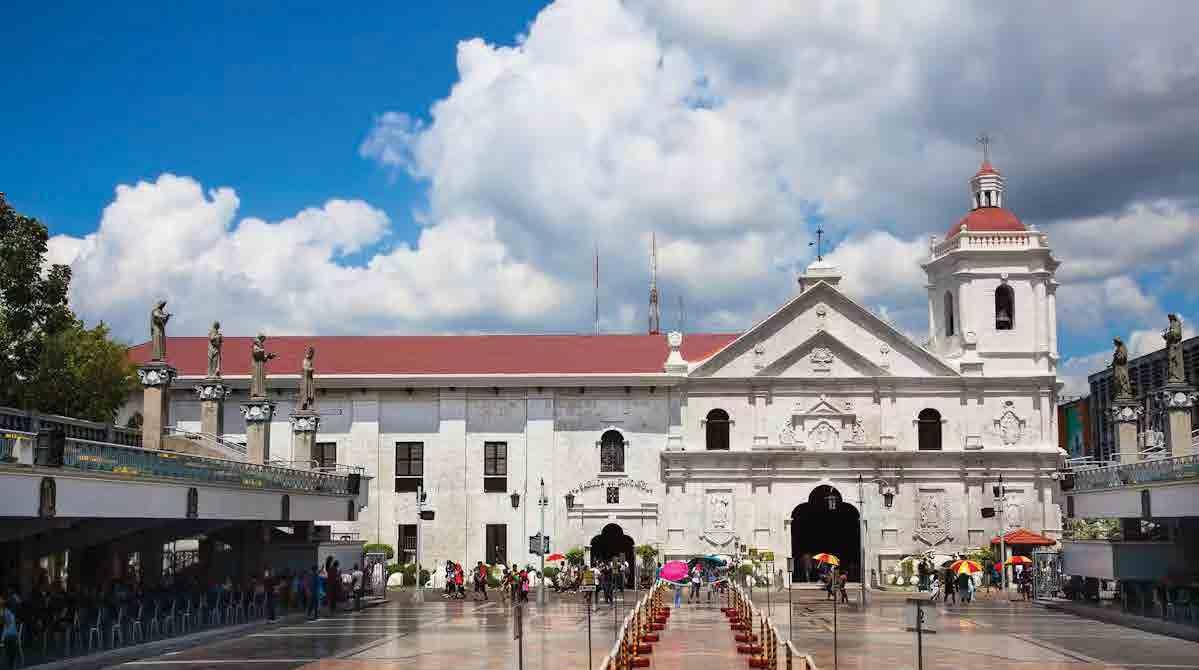
by Billy De La Cruz
Have you ever wondered why some churches in the Philippines draw millions of devotees while others quietly serve their local community? Or why do certain church buildings seem more grandiose than others? Join us on a fascinating journey through the world of Catholic churches in the Philippines, where each sacred space tells a unique story of faith, history, and Filipino culture.
Picture this: It’s a sweltering Sunday morning in your hometown. The air fills with the peal of church bells as families stream into the local simbahan, their finest barongs and ternos rustling as they greet neighbors. This quintessential Filipino parish church is the backbone of Catholic community life.
Parish churches are the workhorses of Filipino Catholicism. They’re where babies cry through baptisms, nervous couples exchange vows, and families bid tearful goodbyes to loved ones.
The parish priest isn’t just a religious figure; he’s a counselor, mediator, and sometimes even a local celebrity.
Take the iconic San Agustin Church in Intramuros, Manila. While it boasts the lofty title of basilica, it’s still very much a parish at heart. Its imposing baroque façade belies the warm, lived-in feel inside. Centuries-old wooden pews bear the imprints of countless worshippers, and the air is thick with the weight of prayers whispered over generations. As one of the oldest stone churches in the Philippines, built in 1587, San
Agustin has withstood multiple earthquakes and even the ravages of World War II. Despite its grand status, San Agustin hosts daily Masses and yearly fiestas with equal gusto, serving as the spiritual home for locals just like any other parish. Visitors are often amazed to learn that the ornate ceiling paintings are trompe l’oeil, creating an optical illusion of 3D designs.
In Marikina City, the Our Lady of the Abandoned Parish reflects the city’s shoemaking heritage with its annual Sapatos Festival. Built-in 1687, this resilient church has withstood numerous floods and earthquakes, standing as a testament to the enduring faith of the Marikeños.
Now, let’s shift gears. It’s Wednesday at Baclaran Church, and the scene couldn’t be more different. The streets are a sea of humanity, with vendors hawking candles and religious trinkets. Inside, the church is packed to the rafters, the air electric with fervent prayers.
Shrines are the rock stars of the church world, drawing pilgrims like moths to a flame. These are churches built around a particular devotion - often to Mary or a beloved saint - and are believed to be conduits for divine intervention.
The National Shrine of Our Mother of Perpetual Help (that’s Baclaran’s official name) is a prime example. Every Wednesday, it transforms into a spiritual mosh pit, with up to 100,000 devotees squeezing in for novena services. Built in 1958 to





replace an older church destroyed in World War II, Baclaran Church has become a symbol of post-war spiritual revival. It holds a staggering 21 masses every Wednesday, a testament to its popularity. The air is thick with whispered petitions and the smoke of countless candles. It’s a sensory overload, a uniquely Filipino blend of faith, folklore, and fervor that has to be seen to be believed.
In Quezon City, the National Shrine of Our Lady of the Holy Rosary of La Naval de Manila has become a beacon for Marian devotees. This shrine, originally built in Intramuros in the 17th century, was reconstructed in its current location after World War II. It houses the venerated image of Our Lady of La Naval, which has been associated with several naval victories and is considered one of the oldest Marian images in the Philippines. The shrine’s Baroque-inspired architecture, with its ornate retablo and intricate carvings, reflects the Spanish colonial influence on Filipino religious art. Not far from there, the National Shrine of Our Lady of Mount Carmel sees devotees streaming in to venerate the image of Our Lady of Mount Carmel, especially during her feast day. Established in 1954, this shrine has survived urban development and natural disasters. Its dome, adorned with a 24-karat goldplated cross, serves as a shining beacon of faith. These shrines highlight the strong Marian devotion in Filipino Catholicism and how historical structures continue to be centers of fervent spirituality in modern times.
Not far from there, the National Shrine of Our Lady of Mount Carmel sees devotees streaming in to venerate the image of Our Lady of Mount Carmel, especially during her feast day. Established in 1954, this shrine has survived urban development and natural disasters. Its dome, adorned with a 24-karat gold-plated cross, serves as a shining beacon of faith. These shrines highlight the strong Marian devotion in Filipino Catholicism and how modern structures can become new centers of fervent spirituality.
Imagine a church so important that it’s like the “Malacañang” of a diocese. That’s a cathedral for you. These churches are where the bishop hangs his hat (or in this case, his mitre).
Step into Manila Cathedral, and you’ll immediately sense the difference. The soaring ceilings, intricate stained glass, and gleaming marble speak of grandeur and authority. This isn’t just any church - it’s the flagship of the Archdiocese of Manila.
Cathedrals are the VIPs of the church world, serving as the seat of the bishop and the nerve center of a diocese. During major celebrations, you might see bishops in their ornate regalia, their curved crosiers symbolizing their role as shepherds of the faithful.
But Manila Cathedral is more than just a pretty face or a postcard-perfect backdrop for Intramuros selfies. Its walls have witnessed coronations, papal visits, and even withstood World War II bombings. Originally built in 1581, it has been rebuilt eight times due to various calamities, with the current structure dating from 1958. It’s the only church in the Philippines to have hosted three papal visits - by Pope Paul VI, Pope John Paul II, and Pope Francis. When you attend Mass here, you’re not just participating in a religious service - you’re stepping into a living museum of Philippine history.
The Cebu Metropolitan Cathedral serves as a testament to the city’s status as the cradle of Philippine Christianity. First built in 1595 and rebuilt several times due to fires and World War II damage, its façade uniquely integrates indigenous Filipino, Muslim, and Spanish designs. Up in the mountains, the Baguio Cathedral, with its distinct pink exterior and twin spires, has become an iconic landmark in the City of Pines. Built in 1936, it served as an evacuation center during World
War II. Its distinctive color comes from the volcanic stones used in its construction, demonstrating how cathedrals often become symbols of their cities while reflecting local geography and history.
If churches had a hall of fame, basilicas would be the inductees. These churches have received a special nod from the Pope himself, often due to their historical or spiritual significance. It’s like a papal seal of approval for their incredible impact on Filipino faith and culture.
Step into Quiapo Church, officially the Minor Basilica of the Black Nazarene. The first thing that hits you is the press of bodies - devotees inching forward to touch or kiss the famous statue of Christ. The air is heavy with incense and sweat, punctuated by impassioned cries of “Viva! Viva!”
Quiapo’s basilica status is a nod to its cultural impact. Its famous statue of Jesus attracts millions during the annual Traslación procession, turning Manila’s streets into a heaving mass of humanity. The original structure was built in 1587, but the current church dates from 1984, having been rebuilt multiple times after fires and earthquakes. Interestingly, the image of the Black Nazarene survived a fire in 1791 that destroyed the church, adding to its mystique. Millions of barefoot devotees jostle for a chance to touch the sacred image. It’s Catholicism with a distinctly Filipino flavor - passionate, physical, and deeply personal.
In Cebu, the Basilica Minore del Santo Niño houses the country’s oldest religious relic, the Santo Niño statue, linking the present to the very beginnings of Christianity in the Philippines. Founded in 1565 and rebuilt multiple times, the church stands on the very spot where the image of Santo Niño was found by Spanish explorers. Far to the north, Our Lady of Piat Basilica in Cagayan stands as a testament to the strong Marian devotion in Northern Luzon. The original chapel was built in the 1600s, with the current structure dating from the 1980s. It houses one of the oldest Marian images in the Philippines, brought
from Macau in 1604. These basilicas show how they can reflect regional spiritual characteristics while preserving centuries of religious history.
Here’s where our church story takes an unexpected turn. These categories aren’t rigid boxes but fluid concepts that often overlap. Many churches wear multiple hats, serving various roles in the community and the broader Church.
Consider the Manila Cathedral. It’s not just the seat of the Archbishop of Manila, but also a minor basilica, a parish church for the Intramuros community, and a popular shrine for Marian devotees. Or take the Basilica Minore del Santo Niño in Cebu - it’s a basilica, a parish church, and one of the country’s most visited shrines.
This multifaceted nature reflects the complexity and richness of Filipino Catholicism itself. Just as our faith intertwines with our cultural identity, our churches embody various aspects of our spiritual and community life.
Beyond the labels of parish, shrine, cathedral, or basilica, each church tells a unique story of faith, history, and Filipino ingenuity.
Why not challenge yourself to explore a church you’ve never visited before? You might stumble upon a hidden artistic masterpiece in a humble parish church, witness a soul-stirring devotion in a packed shrine, or feel the weight of history in a centuries-old cathedral.
These sacred spaces are more than just buildings - they’re living repositories of Philippine culture and spirituality. Each visit can be a journey of discovery, revealing new facets of our shared heritage and faith.
Who knows? In exploring these churches, you might just uncover new dimensions of your own spiritual journey. So go ahead, push open those heavy wooden doors, breathe in the scent of candles and incense, and let yourself be transported. After all, in the tapestry of Philippine Catholicism, every church has a story, and every visit can be a homecoming.


by Billy De La Cruz

The Philippine Stock Exchange (PSE) stands as a beacon of opportunity for those looking to grow their wealth. Yet, for newcomers, its flashing numbers and financial jargon can seem as daunting as a labyrinth. Fear not, aspiring investor! This guide will illuminate your path through the exciting world of Philippine stocks.
According to the PSE’s 2023 Annual Report, the market showed resilience in the face of global challenges, with the PSE index (PSEi) climbing 3.4% to close at 6,450.04 points. This modest uptick hints at the potential lurking within the Philippine market, waiting for savvy investors to tap into it.
KNOWLEDGE:
YOUR MOST VALUABLE ASSET
Before you dive into the market, arm yourself with knowledge. Dr. Alvin Ang, a respected economist from Ateneo de Manila University, emphasizes the importance of economic literacy. “Understanding basic economic indicators is crucial,” he advises. “GDP growth, inflation rates, and interest rates are the pulse of the market.”
Your journey begins with research. The Securities and Exchange Commission (SEC) mandates that all listed companies disclose their financial statements and annual reports. These treasure troves of information are readily available on the PSE EDGE portal, offering insights into a company’s health and potential.
CRAFTING YOUR MARKET APPROACH
As you step into the world of stocks, define your goals. Are you in it for the long haul, or are you seeking quick gains? Your objectives will shape your strategy, guiding your hand as you make your first trades.
Diversification isn’t just a buzzword— it’s your shield against market volatility. A study by the CFA Institute Philippines revealed that diversified portfolios consistently outperformed concentrated ones over time, weathering market storms with greater resilience.
For those taking their first steps, financial guru Marvin Germo suggests starting with blue chip stocks. “These established companies offer stability

and often pay dividends,” he explains in his book “Stock Smarts.” Think of them as the steady ships in the sometimesturbulent sea of the stock market.
With knowledge in hand, it’s time to take action. Choose a licensed broker from the PSE’s list of accredited trading participants. Many now offer user-friendly online platforms, making it easier than ever to start your investment journey from the comfort of your home.
Don’t feel pressured to invest your life savings from the get-go. The PSE’s “Stock Market Investor Profile” report shows that 74% of retail investors have portfolios valued at P500,000 or less. Start small, find your footing, and grow your investments as your confidence builds.
Stay informed about market trends and company news. The PSE mobile app is your window into the market, offering real-time data at your fingertips. And don’t forget about dividends—reinvesting these payouts can turbocharge your portfolio’s growth over time.
The stock market is a living entity, constantly evolving. Embrace this dynamism by committing to lifelong learning. The PSE Academy stands ready to guide you, offering free webinars and online courses. Last year alone, over 50,000 individuals participated in their investor education
programs, joining a community of learners eager to master the market.
BALANCING HOPE AND REALITY
While the allure of substantial returns is strong, it’s crucial to temper your expectations. Dr. Wealth Ariston, a finance professor at the University of the Philippines, advocates for a long-term perspective. “The market’s daily fluctuations are like waves on the ocean,” he muses. “Focus on the horizon, not the crests and troughs.”
Historical data paints a picture of both promise and caution. From 2009 to 2019, the PSEi boasted an average annual return of 11.5%—an impressive figure that includes both soaring bull runs and sobering bear markets.
Investing in the Philippine stock market is more than a financial decision—it’s the beginning of an exciting journey. Armed with research, guided by strategy, and fueled by continuous learning, you’re now ready to take your first steps into the world of stocks.
Remember, the path to financial growth is rarely a straight line. There will be twists and turns, peaks and valleys. But with patience, wisdom, and a well-crafted approach, you’ll be well-equipped to navigate the fascinating landscape of the Philippine Stock Exchange. Your adventure in wealth creation starts now—may your investments flourish and your financial future shine bright.

